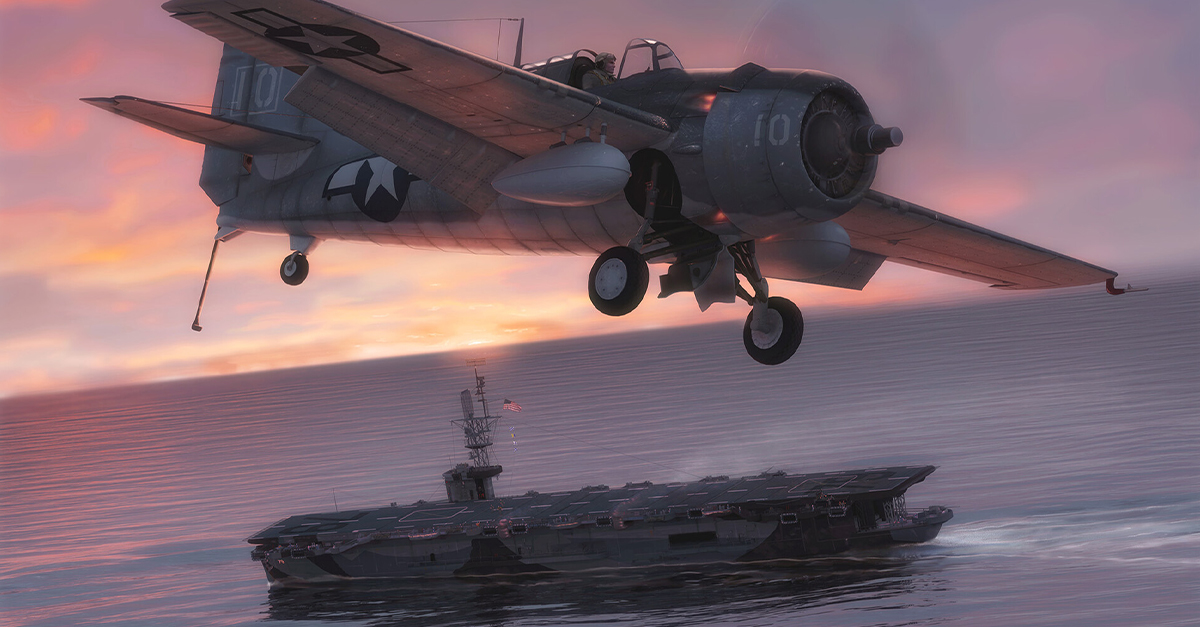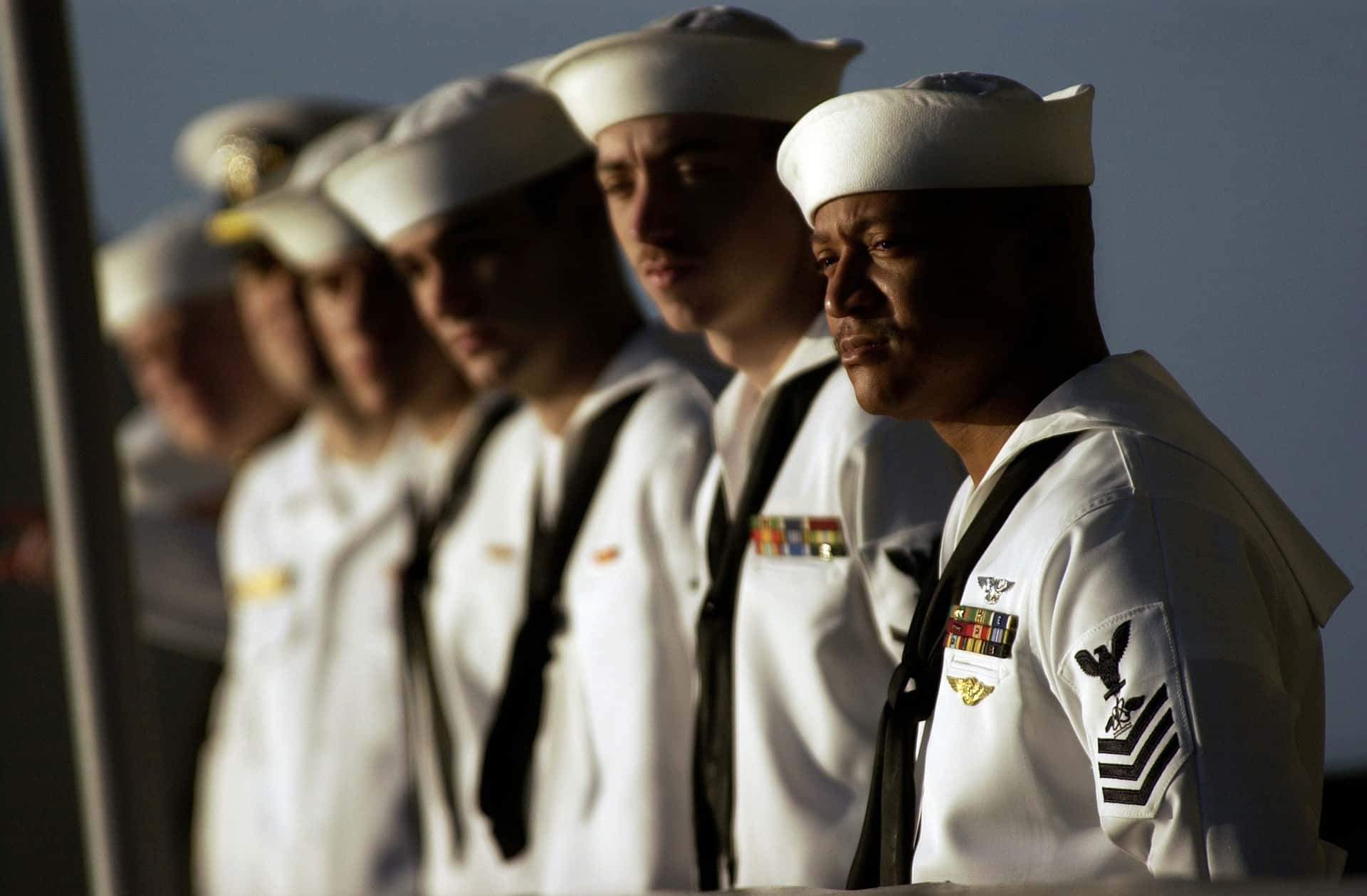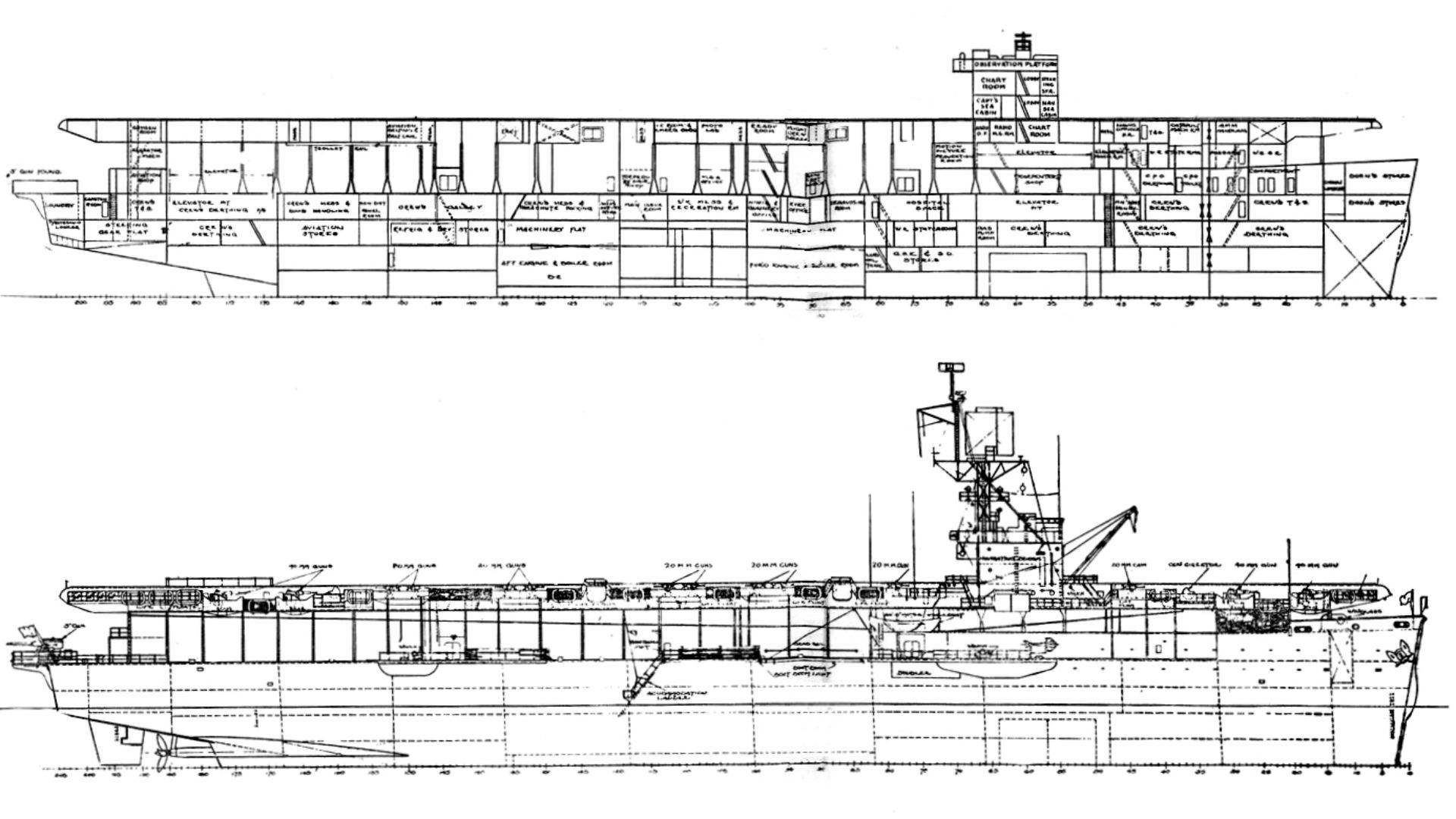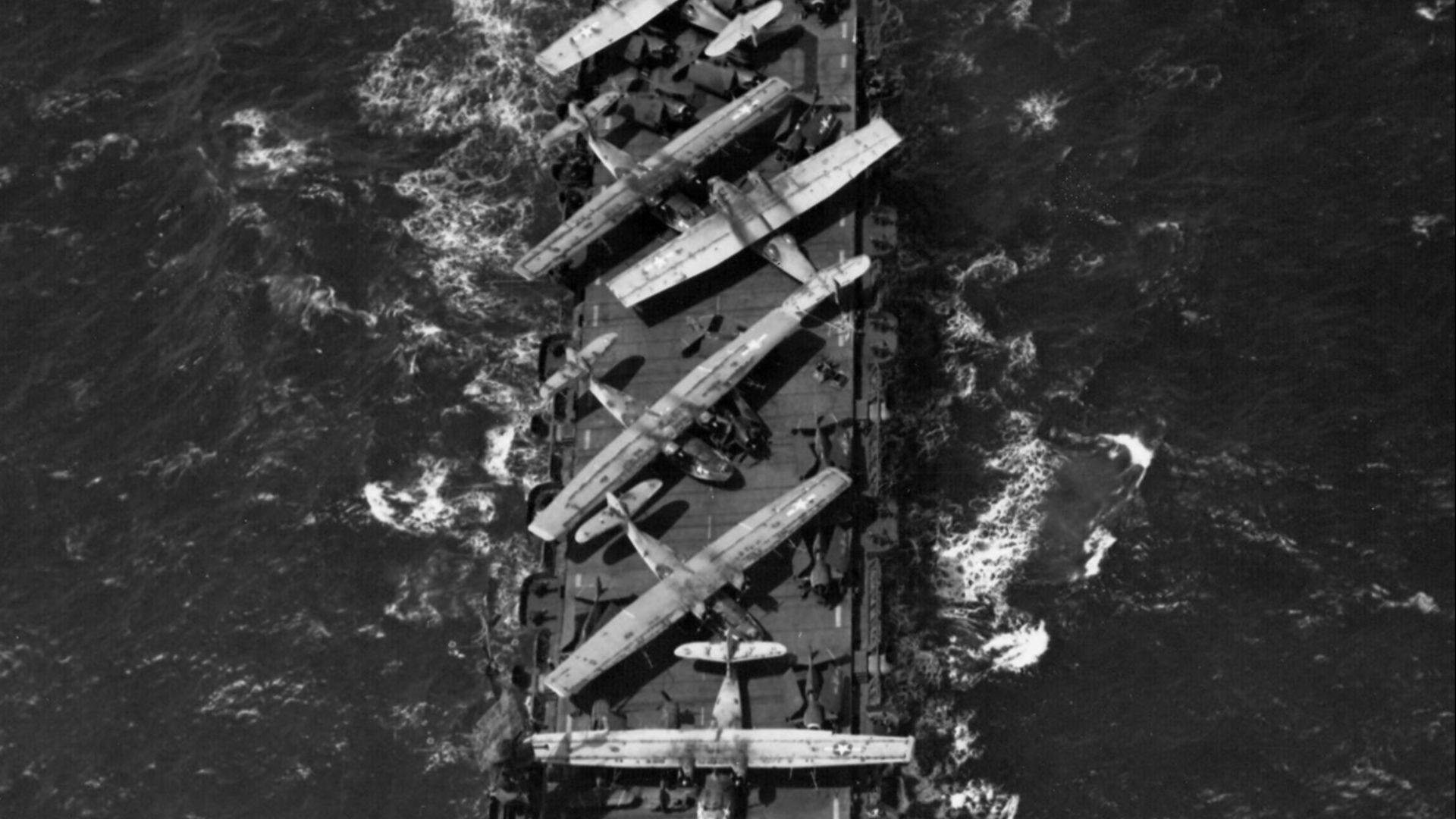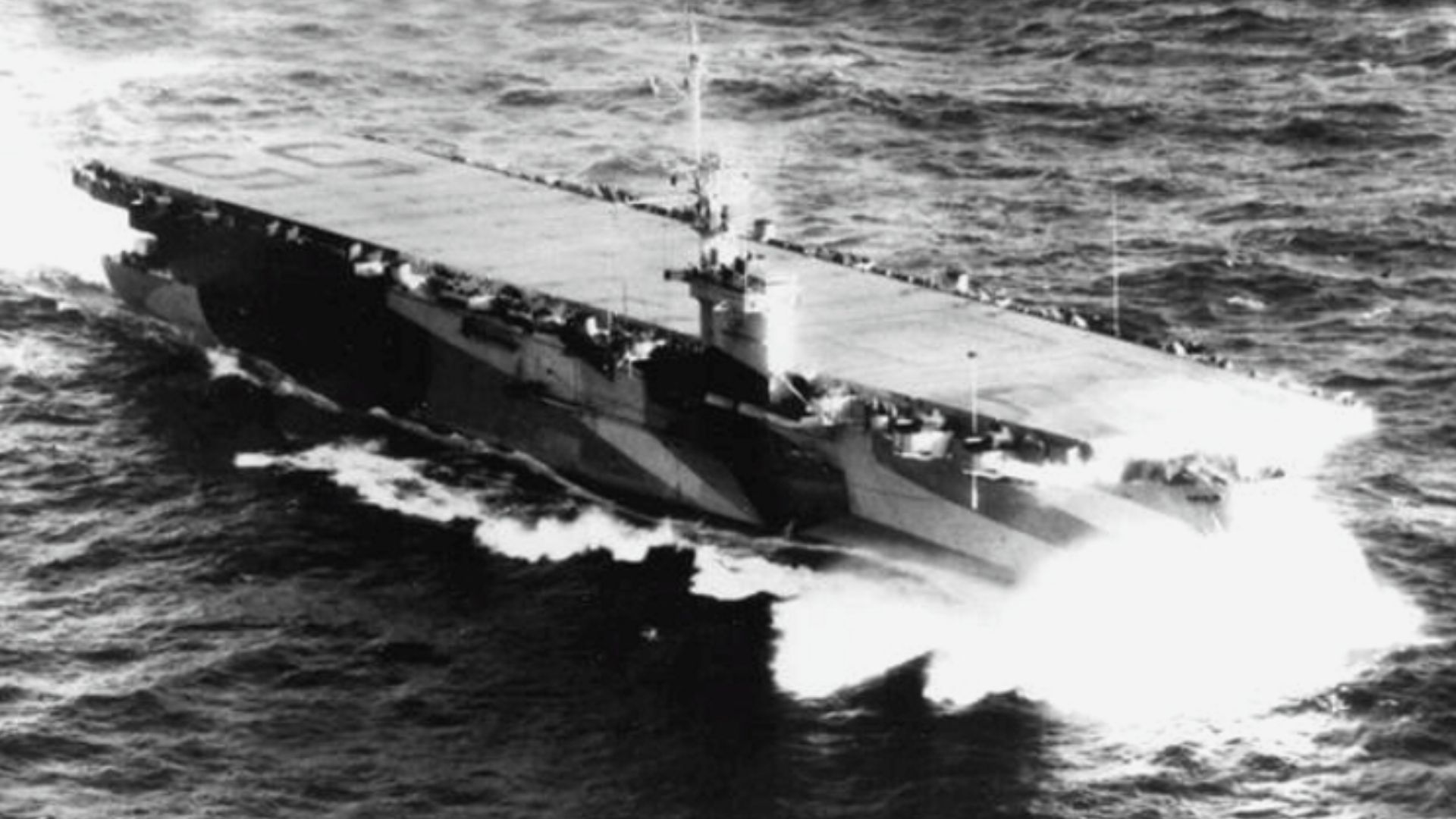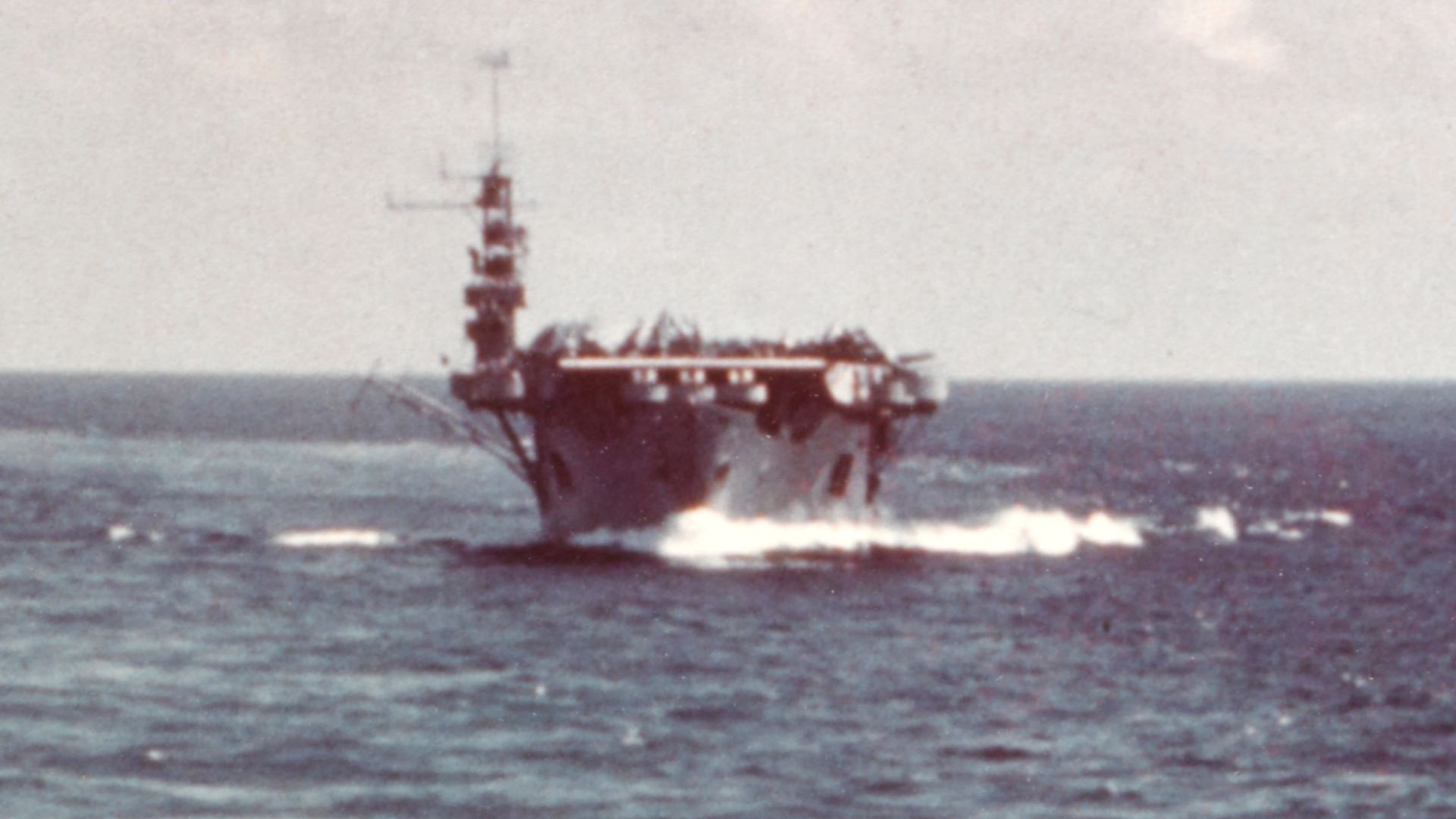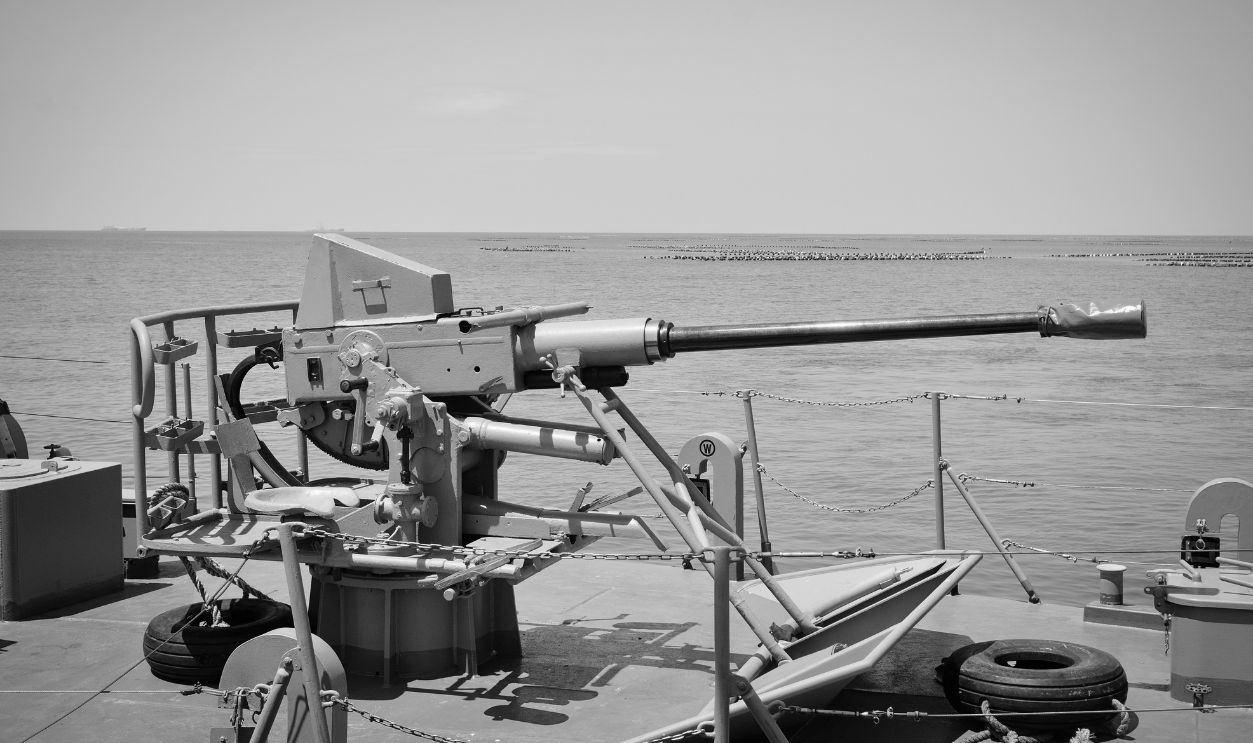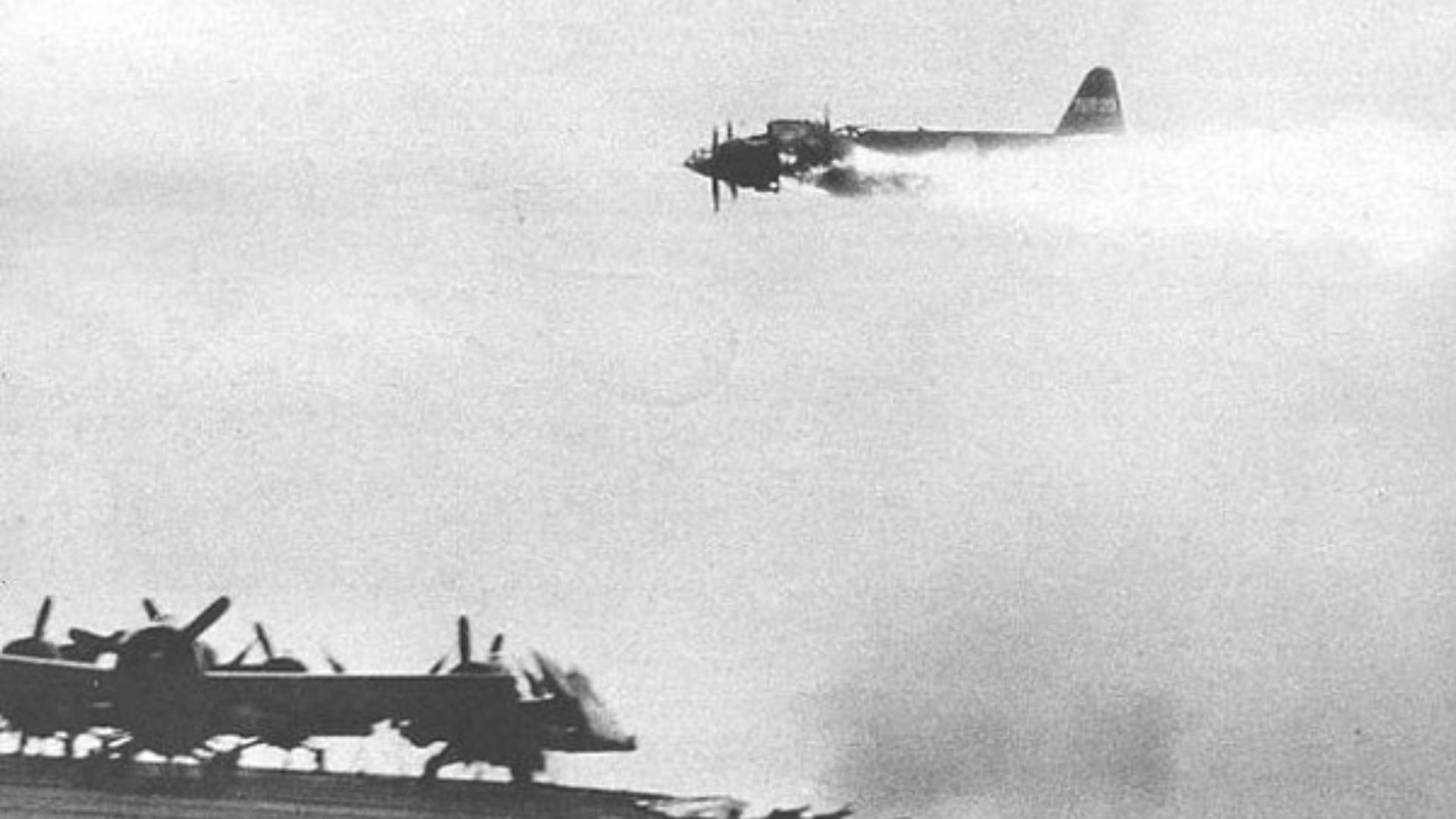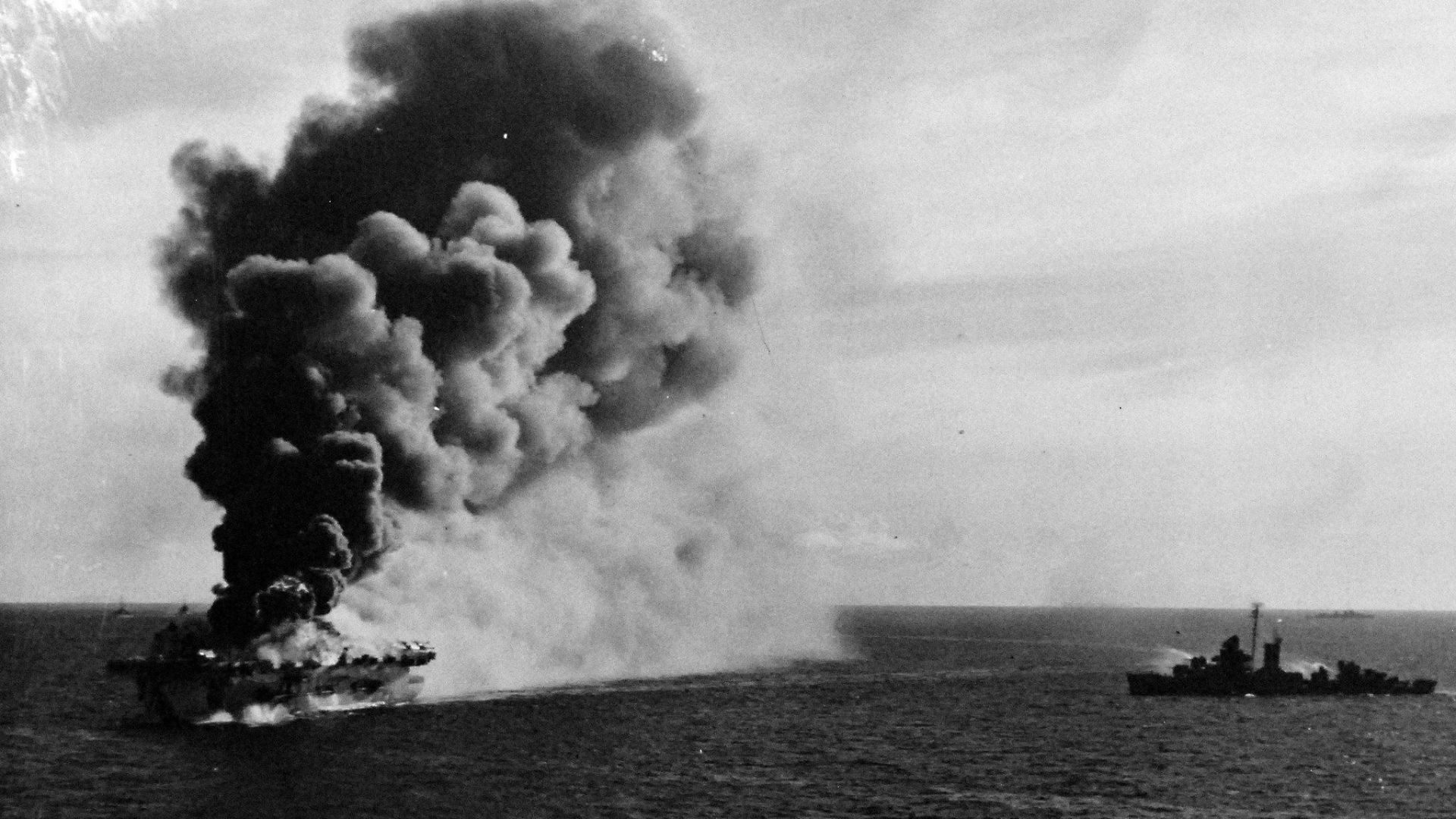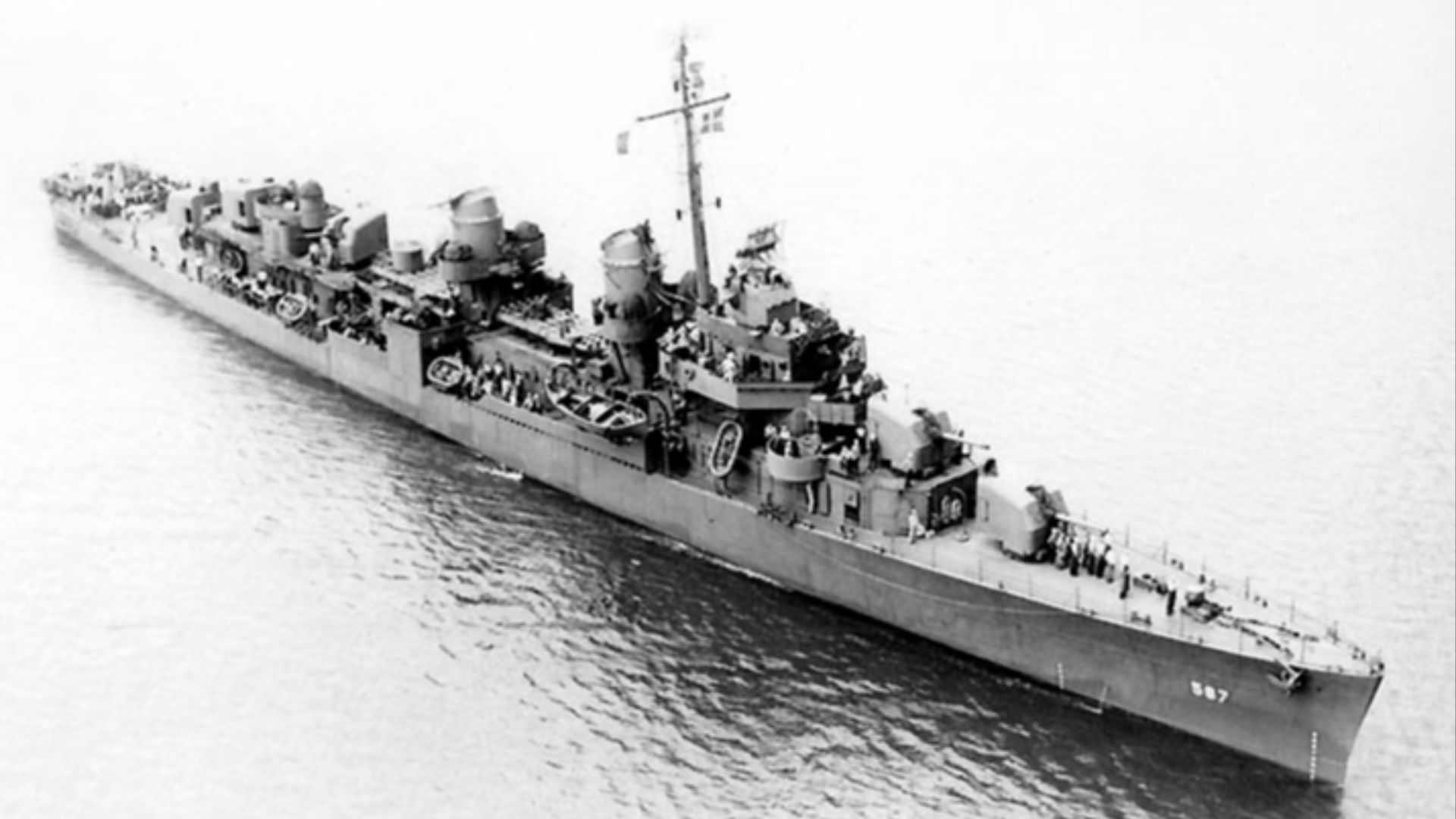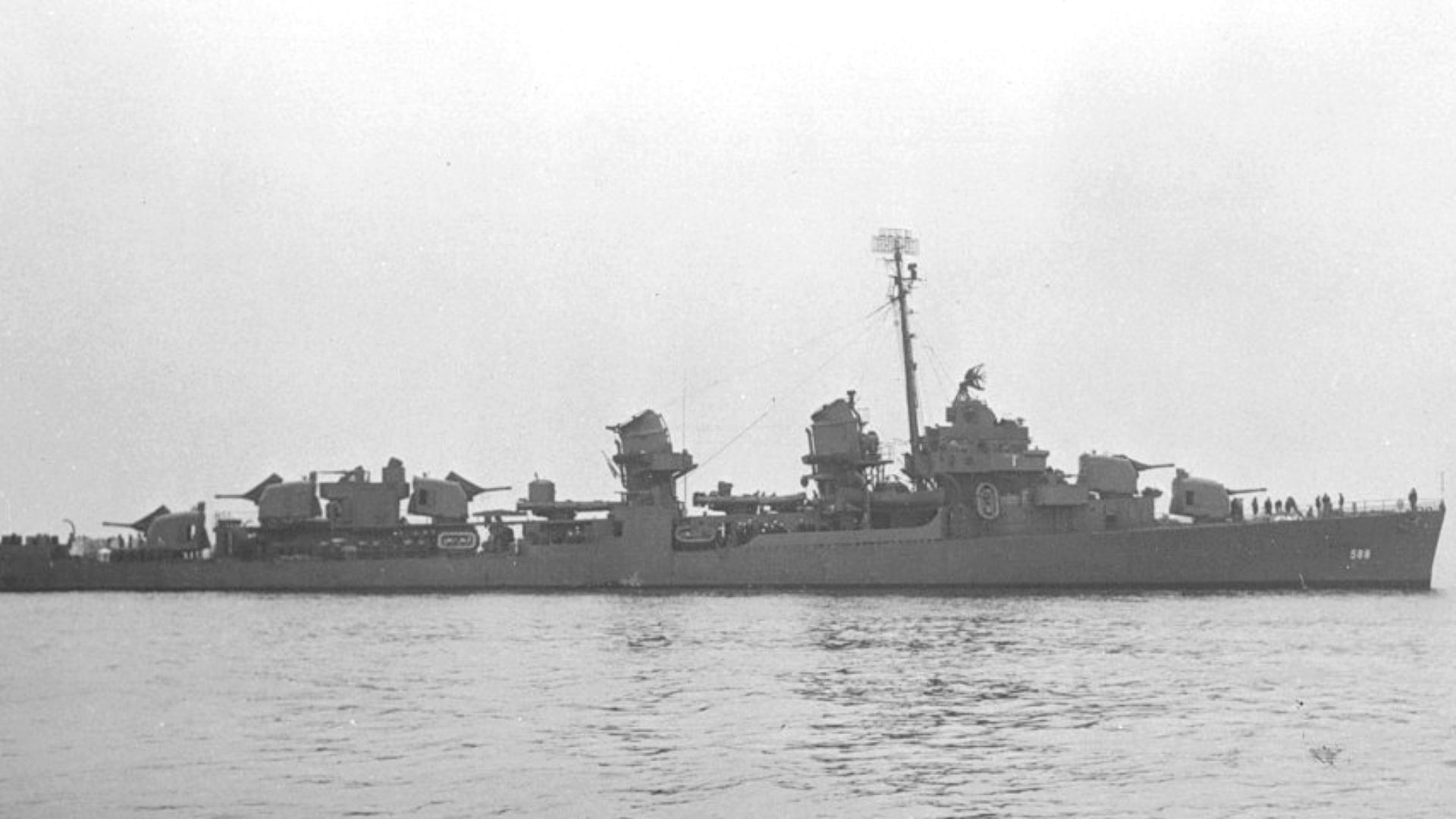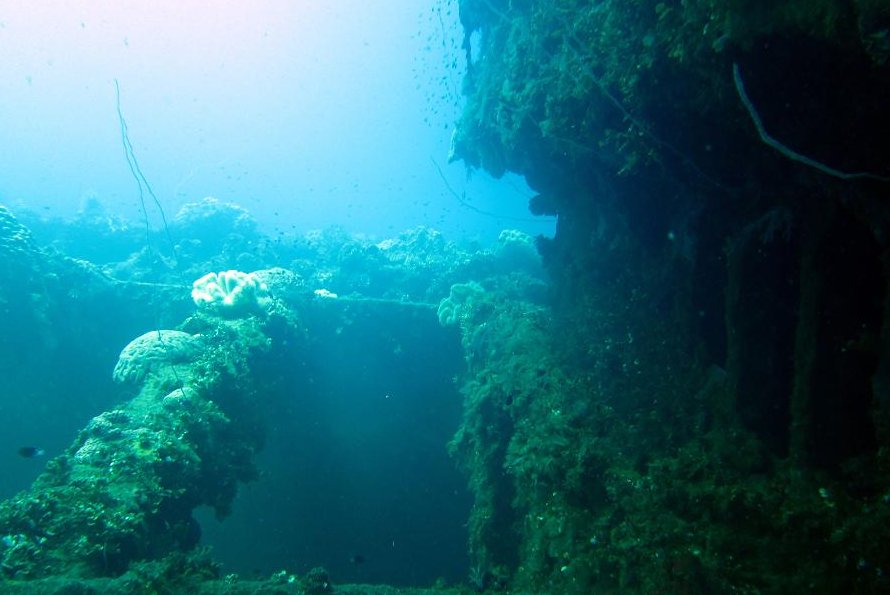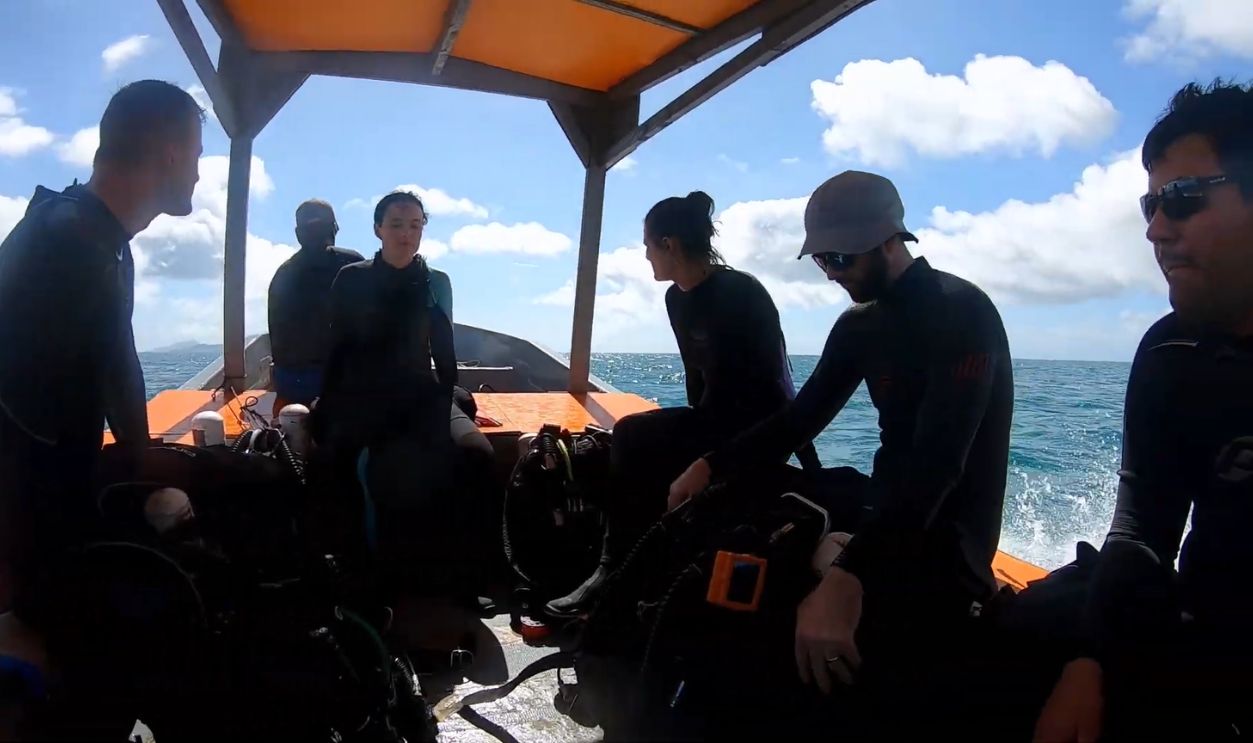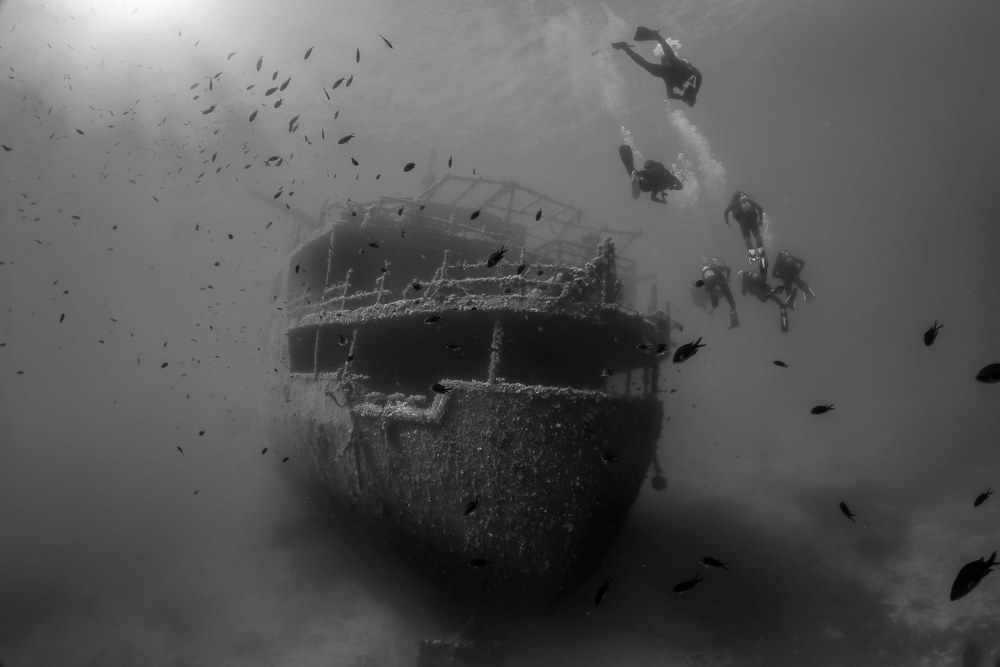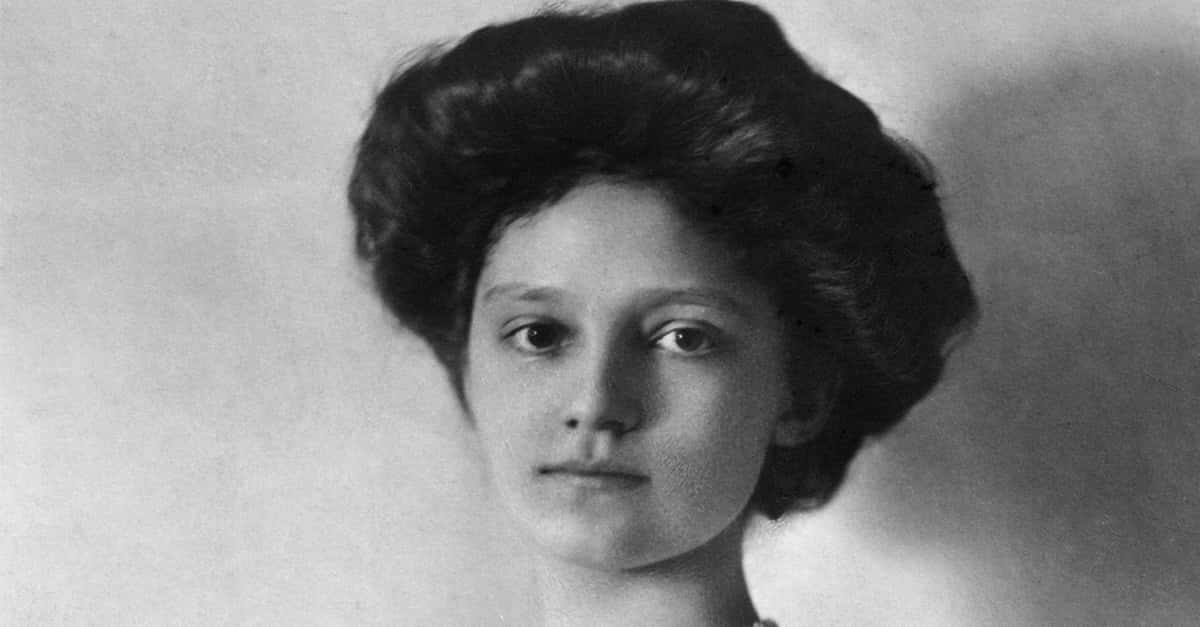Lost And Found
Throughout the history of naval-based transit, ships have been lost to the depths of the sea. Some have exact locations recorded, others have vanished completely. A slim few get rediscovered as scholars and researchers connect new dots to find these forgotten sinkings.
Named For The Natural Beauty Of Her Country
The USS Ommaney Bay is one such ship to be located in recent years. Named for a bay in Alaska, the ship was first launched in 1943 from Vancouver, Washington. Her construction was sponsored by Mrs PK Robottom and was built by the Kaiser Shipbuilding Company.
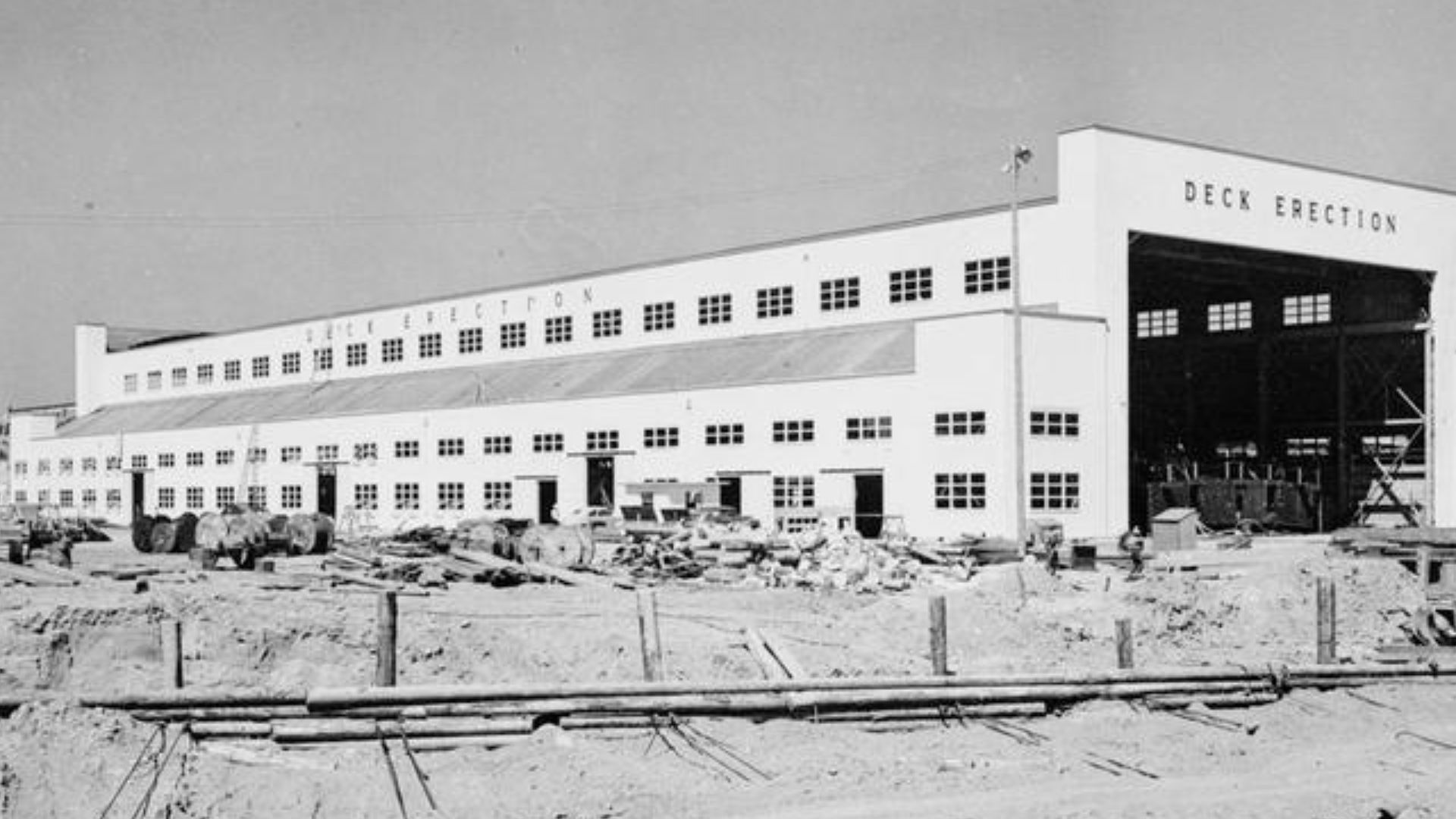 Unknown authorUnknown author, Wikimedia Commons
Unknown authorUnknown author, Wikimedia Commons
Taken Under The Wing Of The Navy
A year later, she was transferred to the control of the United States Navy and commissioned to participate in the WWII effort. On February 11, 1944, Captain Howard L Young took command. The ship’s design granted her some specific advantages during this international conflict.
Capabilities Beyond Expectation
The ship was an escort carrier in the Casablanca-class. Ommaney was one of the many mass-produced carriers of this type, which meant she was easy to assemble from prefabricated parts and simple to repair if she was damaged during conflicts. But that wasn’t the only upper hand she had.
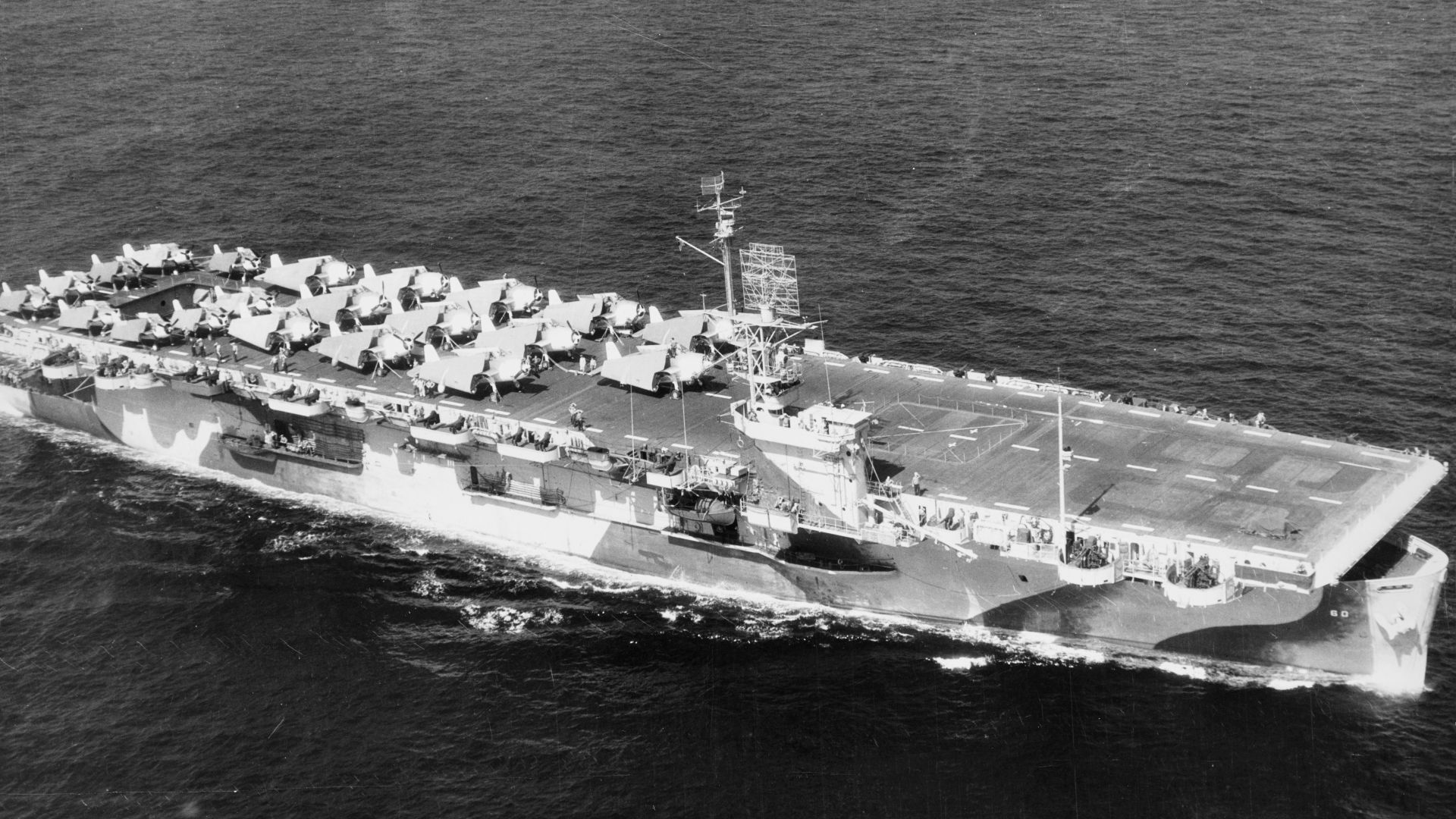 Unknown authorUnknown author, Wikimedia Commons
Unknown authorUnknown author, Wikimedia Commons
Power Throughout Her Construction
She had two Uniflow steam engines that totaled 9,000 horsepower. The carrier had a max speed of 19 knots, which was wild for a ship of that weight and size. Even though in comparison to smaller vessels she was large, the design of the carrier was actually very compact. So much so that Ommaney needed a surprising feature.
Creative Ways To Get Planes In The Air
An aircraft catapult was installed at the bow to help planes take off from the ship’s deck. Not only that but there were two elevators on either end of the ship that lifted smaller aircraft onto the top deck from lower levels of the carrier. But this vessel wasn’t just a storage ship.
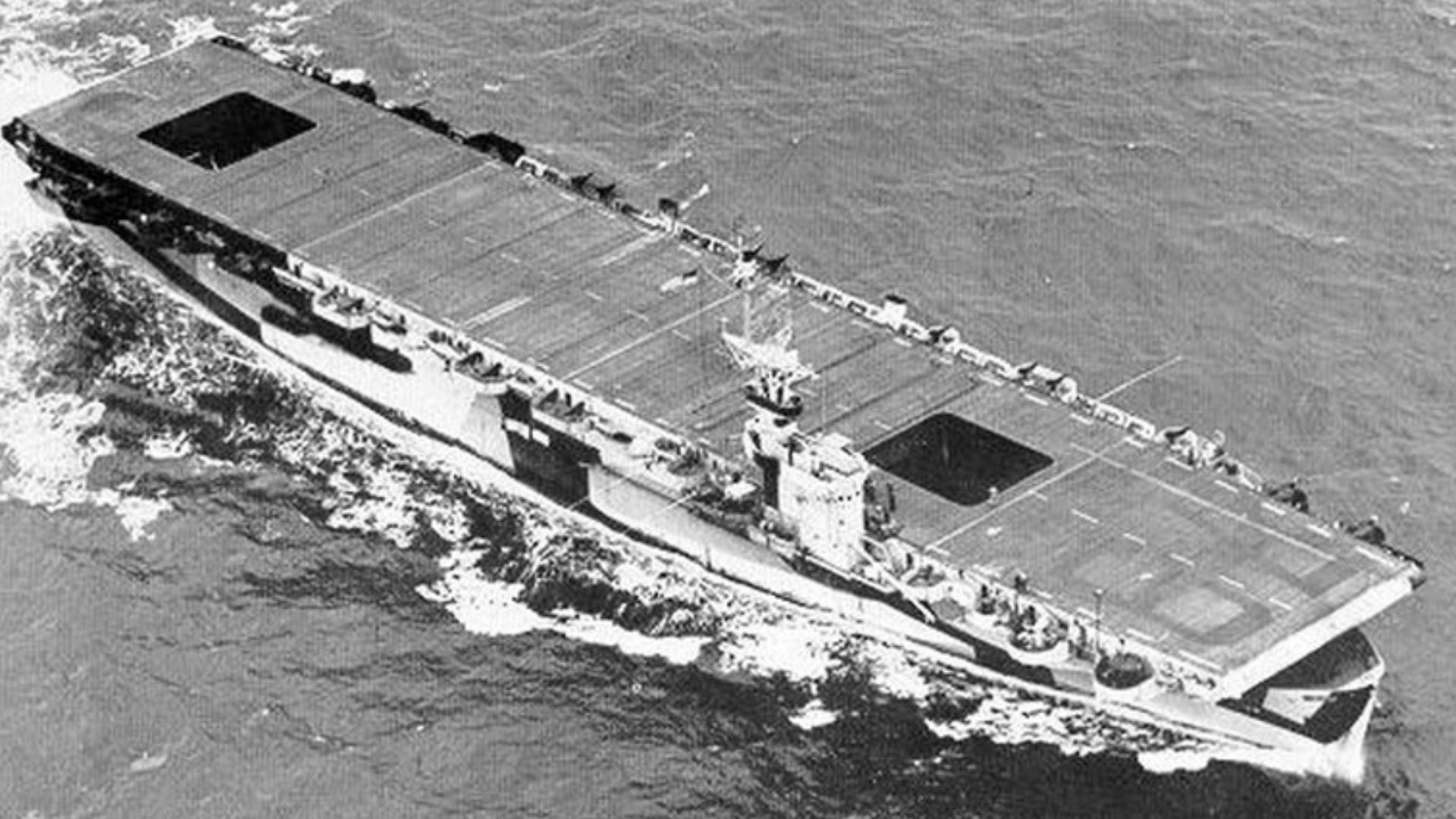 U.S. Navy Employee, Wikimedia Commons
U.S. Navy Employee, Wikimedia Commons
She Was Not Defenseless
The USS Ommaney Bay was packing its own protection. It had huge projectiles mounted to the stern, with 16 additional anti-aircraft devices and 12 huge cannons. As its service went on, this class of carrier had additional combat capabilities installed to counter kamikaze strategies.
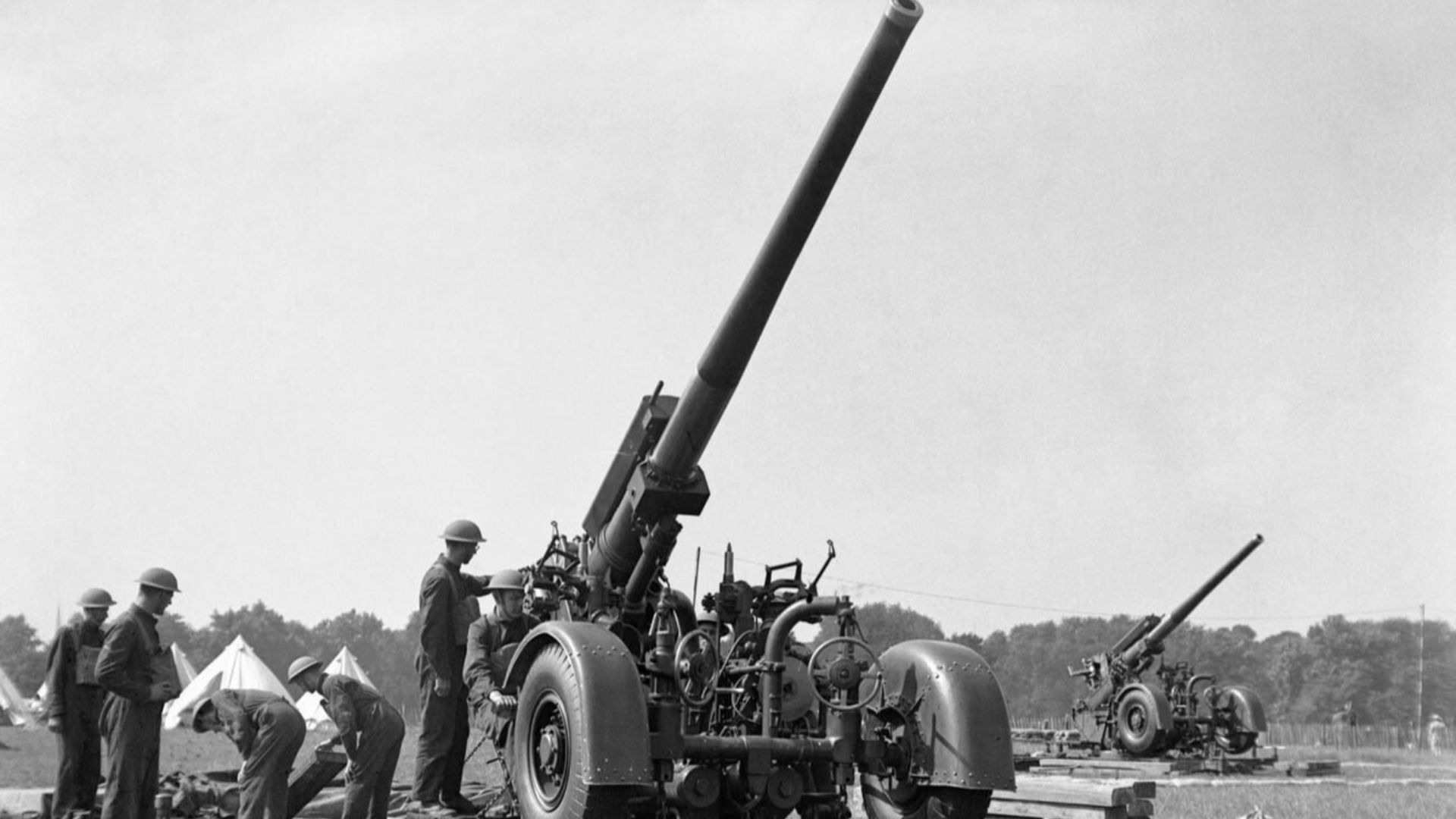 War Office official photographer, Wikimedia Commons
War Office official photographer, Wikimedia Commons
The Mother Of Little Planes
Her carrying capacity was intense. During the Mariana and Palau Islands campaign, a total of 27 aircraft were housed by her. And that wasn’t even the most she could carry, as we’ll see later.
A Maiden Voyage Decrying Her Abilities
The first journey she went on was a simple one. She was fitted out in Astoria, Oregon, and from there, she did a sea trial in Puget Sound. After she was deemed sea-worthy, her first destination was far-reaching.
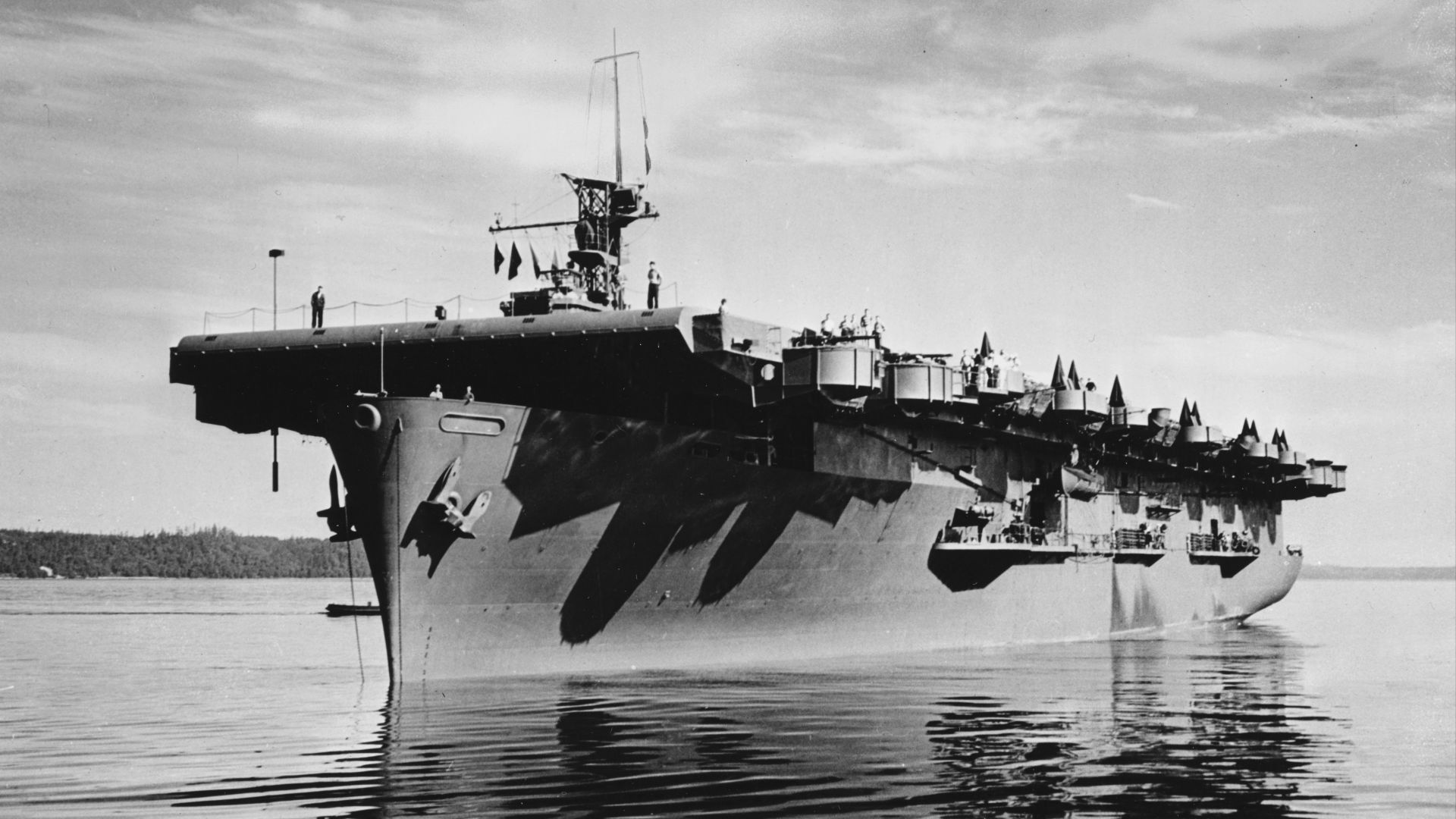 Unknown authorUnknown author, Wikimedia Commons
Unknown authorUnknown author, Wikimedia Commons
A Quick Jaunt For A Ship So Fast
On board, she carried many aircraft and supplied cargo for the efforts overseas, and she transported them to Brisbane, Australia. Her quest began on March 19, 1944, and by April 27, she was back in San Diego. For such a long haul, she didn’t take her time.
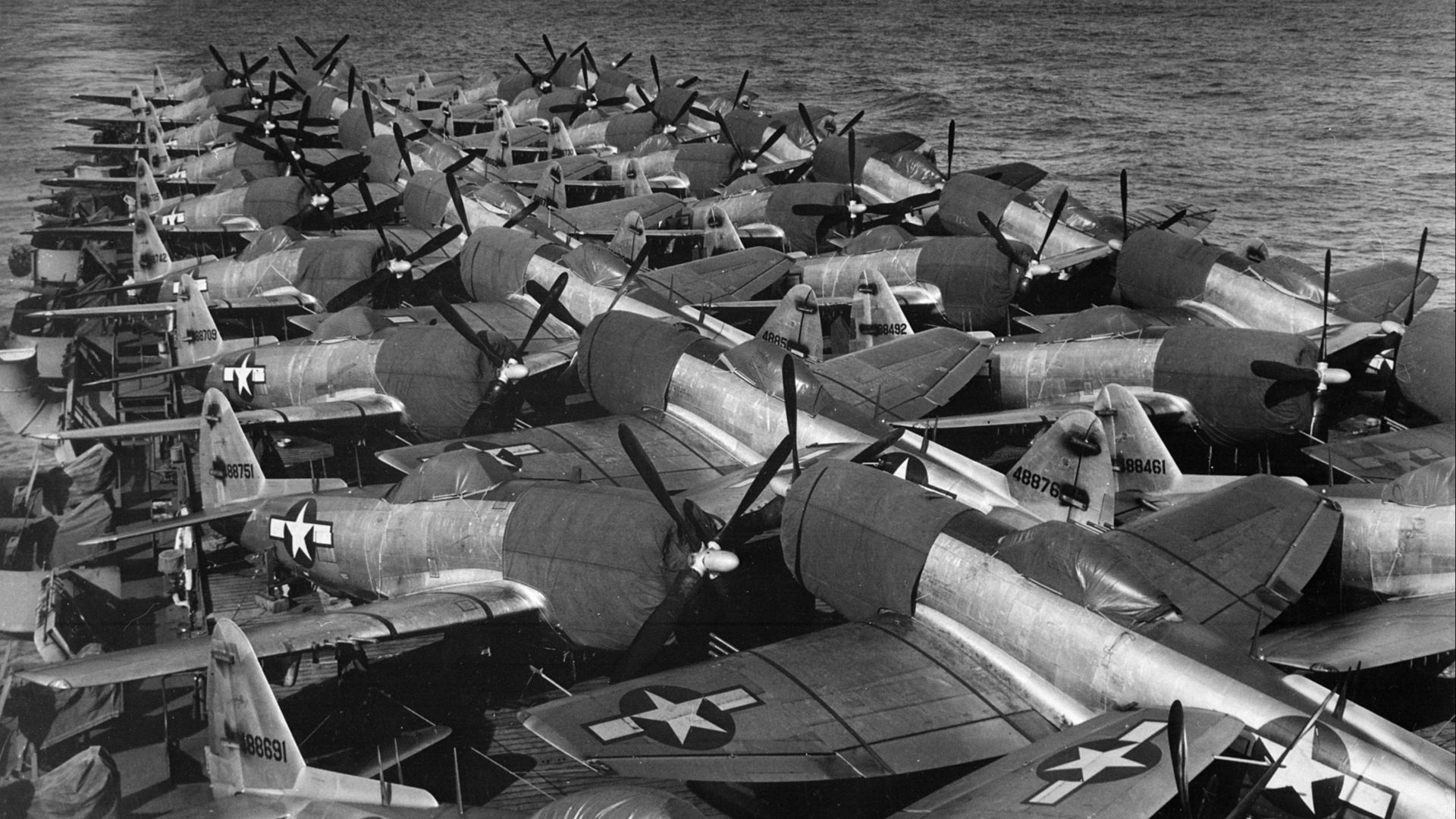 PhoM3c. D.C. Diers, USN (photo 80-CASA-706), Wikimedia Commons
PhoM3c. D.C. Diers, USN (photo 80-CASA-706), Wikimedia Commons
A Vital Contributor
The USS Ommaney Bay was an important part of the combat effort at the time. She and other carriers of her class were sent to provide support around the Pacific. Due to her size and capabilities, she could support the sea and the sky.
A South Pacific Star
The carrier traveled throughout the Pacific, especially in the southern part of the ocean around Japan and the Philippines. Though she’d only been on the water for about two years, she made her mark. She was awarded two Battle Stars for her contributions and her service.
Tragedy Struck At A Surprising Moment
On January 4, 1945, the USS Ommaney Bay was in transit near the Philippines when a Japanese kamikaze pilot collided with the ship’s starboard side. This wasn’t the first time they’d encountered the strategy, having engaged with over 40 planes in December. But that conflict went a little differently.
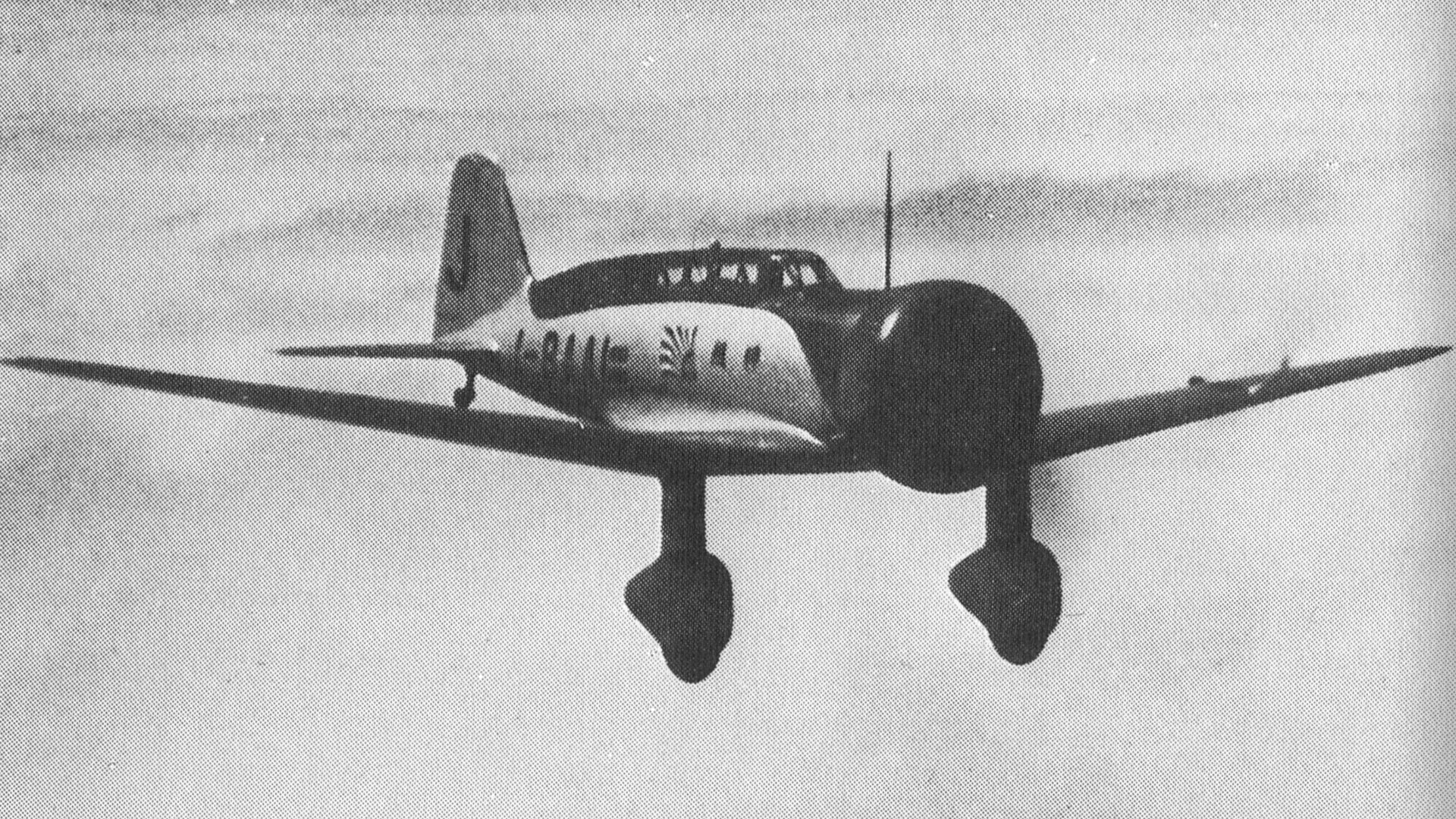 Unknown authorUnknown author, Wikimedia Commons
Unknown authorUnknown author, Wikimedia Commons
One Victory Didn’t Mean She’d Always Win
In December, the officers and sailors of the carrier could see their enemies incoming and they utilized their anti-aircraft munitions to protect themselves. The plane was within 400 meters of the ship when it went up in flames, sailing a mere 27 meters over the deck and into the ocean on the other side of the carrier.
She Was Struck, And She Couldn’t Recover
This time, on January 4, 1945, things didn’t go according to plan for the USS Ommaney Bay. It was just after 5 pm, and the ship had already taken down one plane attempting to engage the carrier. They didn’t see the second plane coming.
Her Officers Did They Best They Could
Captain Young, who had led the ship since its commission into US control, had tried to counter the possibility of kamikaze planes by setting up many lookouts across the top deck. All 10 were given a lookout and Polaroid glasses—but without radar signals to help them, the lookouts weren’t enough.
 U.S. navy photo by Photographer's Mate 1st Class Spike Call., Wikimedia Commons
U.S. navy photo by Photographer's Mate 1st Class Spike Call., Wikimedia Commons
A Natural Phenomenon Spelled Her Downfall
The sun was setting, the glare of which hid the other plane from the sailors on the USS Ommaney Bay. When they collided, the sailors on watch were taken off guard by the abrupt noise and fire. The plane came at them head-on.
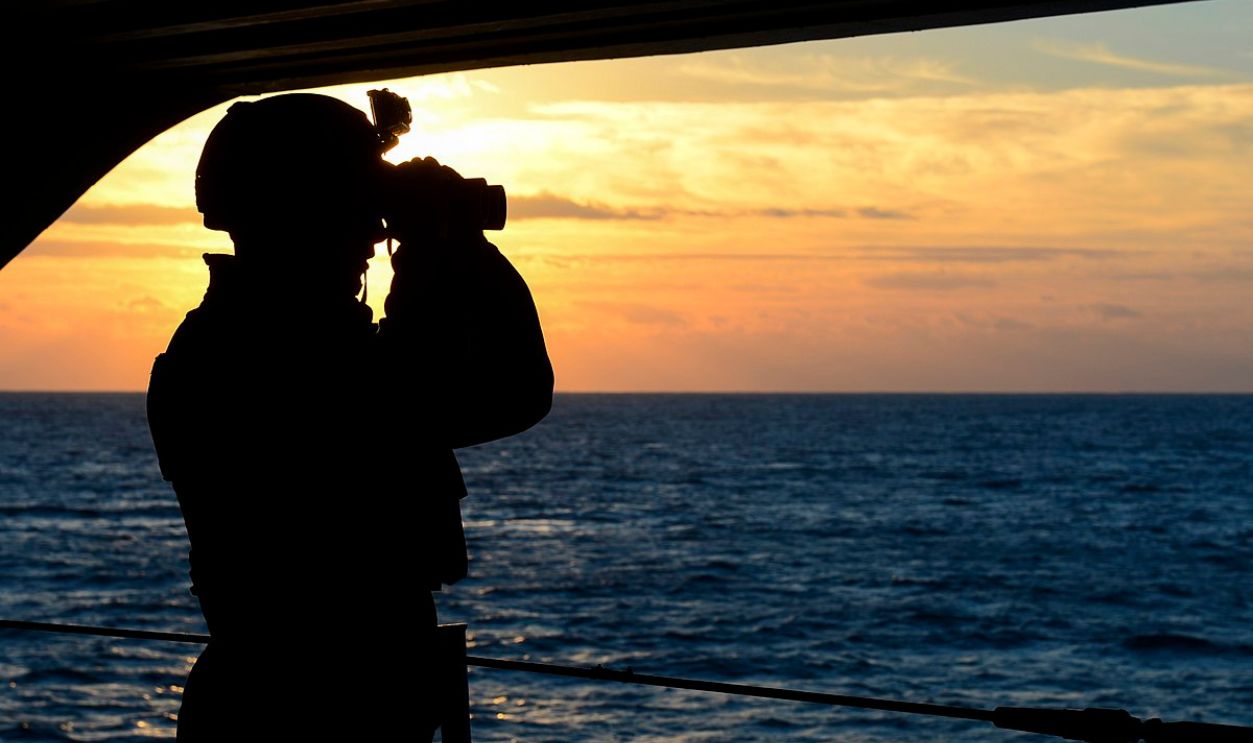 Official U.S. Navy Page from United States of America, Wikimedia Commons
Official U.S. Navy Page from United States of America, Wikimedia Commons
The Initial Damage Was Already Extensive
As it made its way over the flight deck, the plane released two explosives. The first punched through the top deck into the hangar deck below. When it detonated, it set off the stored planes, all of which had full tanks of gas, and disrupted one of the boiler uptakes.
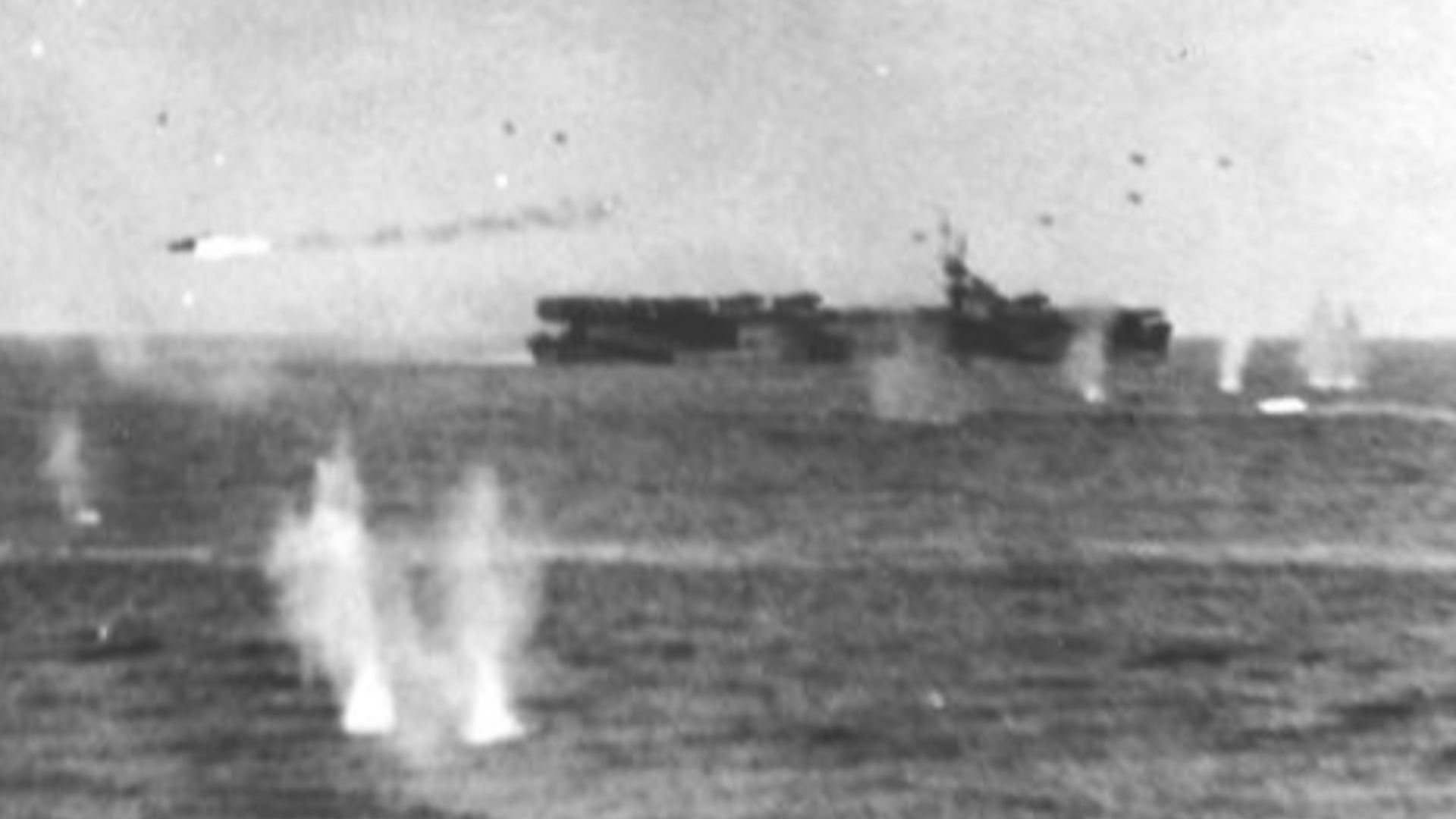 Unknown authorUnknown author (US Navy), Wikimedia Commons
Unknown authorUnknown author (US Navy), Wikimedia Commons
Her Hangar Was About To Blow
At the time, the USS Ommaney Bay was carrying 31 planes in its hangar. This was the most the ship had ever carried. Each of them was armed and had full tanks of highly flammable fuel. The first impact had already irreparably damaged the ship, but the second caused even more damage.
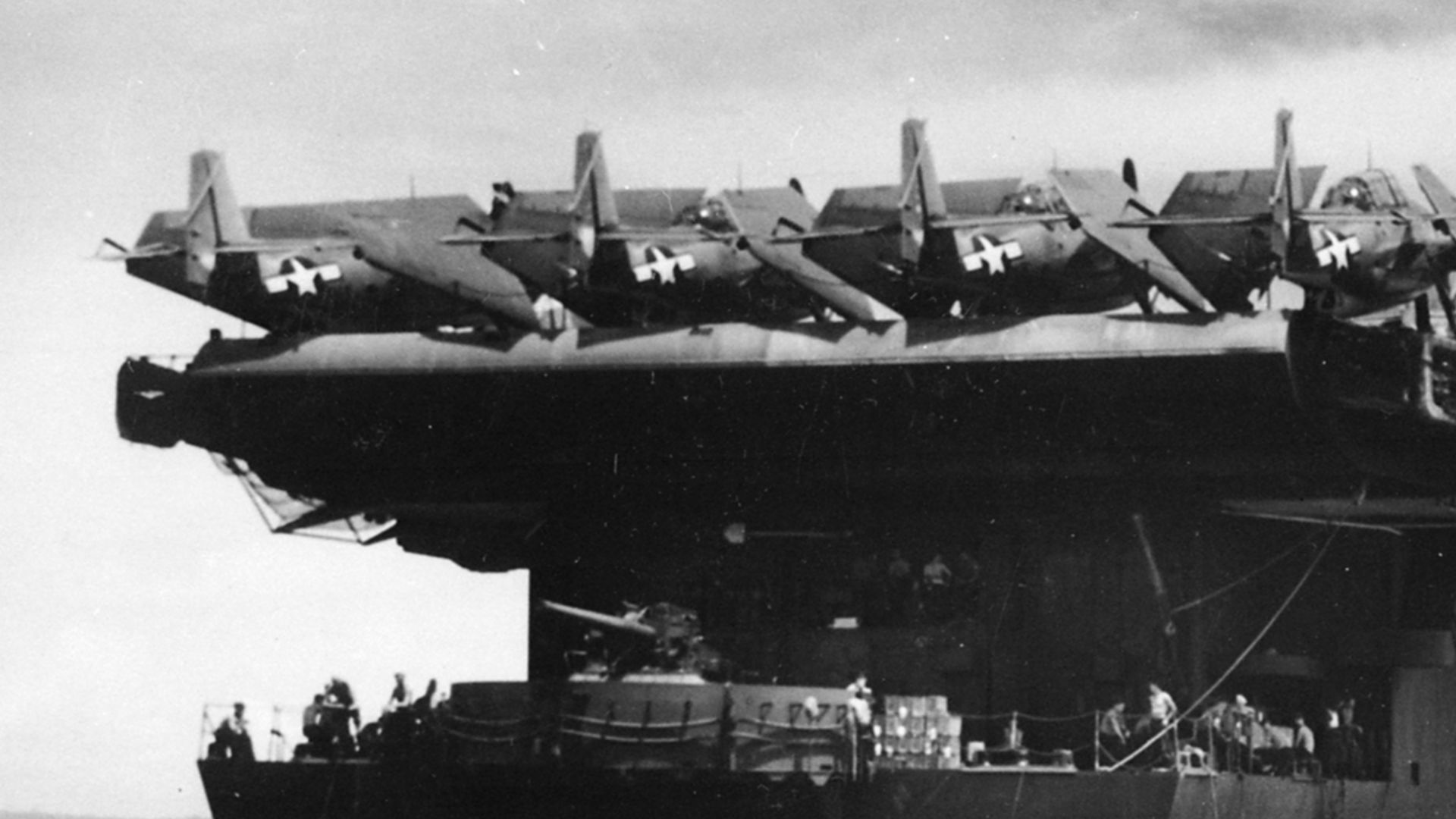 PhoM1c R.W. Mowday, USN (USN photo 80-CASA-618), Wikimedia Commons
PhoM1c R.W. Mowday, USN (USN photo 80-CASA-618), Wikimedia Commons
Things Got Significantly Worse
The second missile went through the hangar deck to the second deck, where it damaged the fire main and exploded on the ship’s starboard side. A fire immediately went up, devouring the aft flight deck. The destruction caused a loss of power and communications in the bridge.
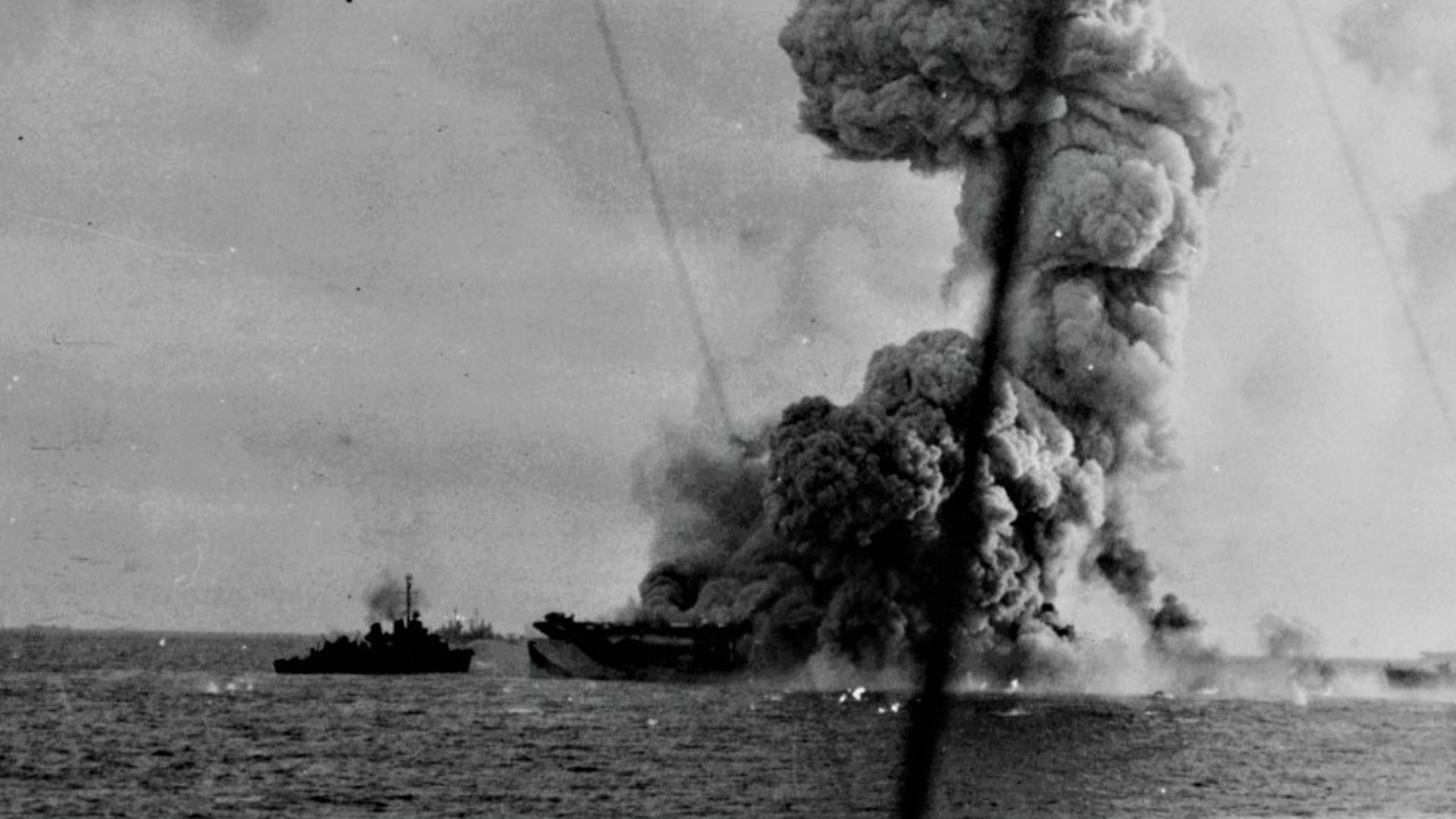 Naval History & Heritage Command
, Wikimedia Commons
Naval History & Heritage Command
, Wikimedia Commons
They Couldn’t Quell The Growing Fire
It is suspected that an oil take was ruptured, which merely served to fuel the fire and give it an “oily” appearance. The officers struggled to contain and control the raging flames, but the incendiary scene was made worse by what the carrier contained.
She Had Support
Luckily, the “Big O” wasn’t alone. Other ships had been set in transit alongside the carrier, and they responded to the cries for help and came to put out the fires. To their misfortune, it wasn’t enough to save the carrier.
More, Smaller Incidents Made Everything Worse
The heat was causing rounds stored in the hangar deck and in the planes to go off. This made fighting the fires even more dangerous for the officers aboard the USS Ommaney Bay. Even with the help of other ships, the situation was dire.
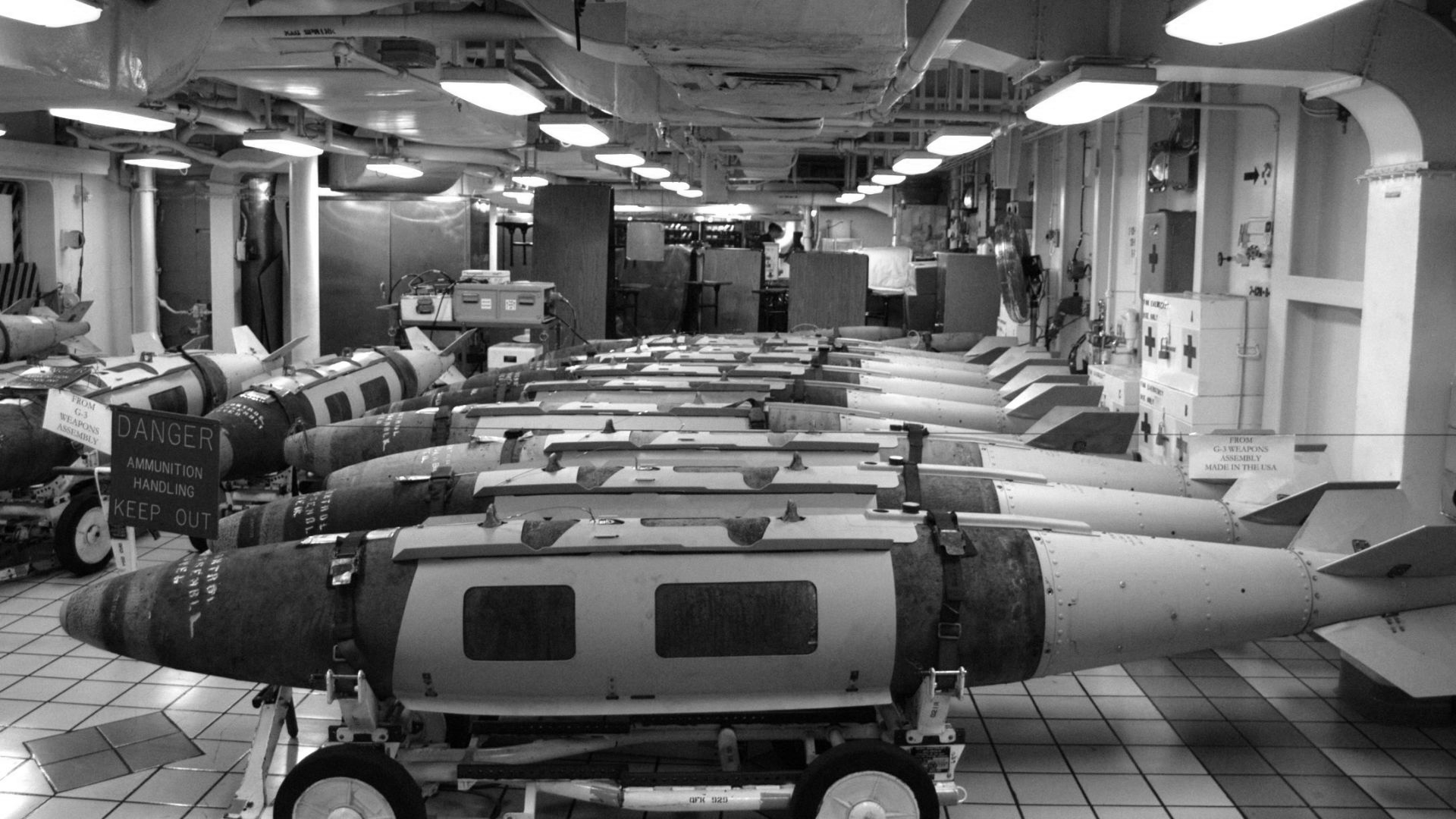 U.S. Navy photo by Photographer's Mate 3rd Class Michael S. Kelly., Wikimedia Commons
U.S. Navy photo by Photographer's Mate 3rd Class Michael S. Kelly., Wikimedia Commons
A Failed Attempt At Further Aid
Another ship, the Bell, tried to navigate around the carrier to help put the fires out but accidentally harmed part of the port side of the ship. Merely a half hour after the initial incident, the wounded crew members were evacuated from the ship.
The Fires Couldn’t Be Stopped
By 6 pm, the heat on the top deck was so intense that any attempts to put out the flames were useless. There was a desperation to put them out, though, as within the ship, massive torpedoes were at risk of going off.
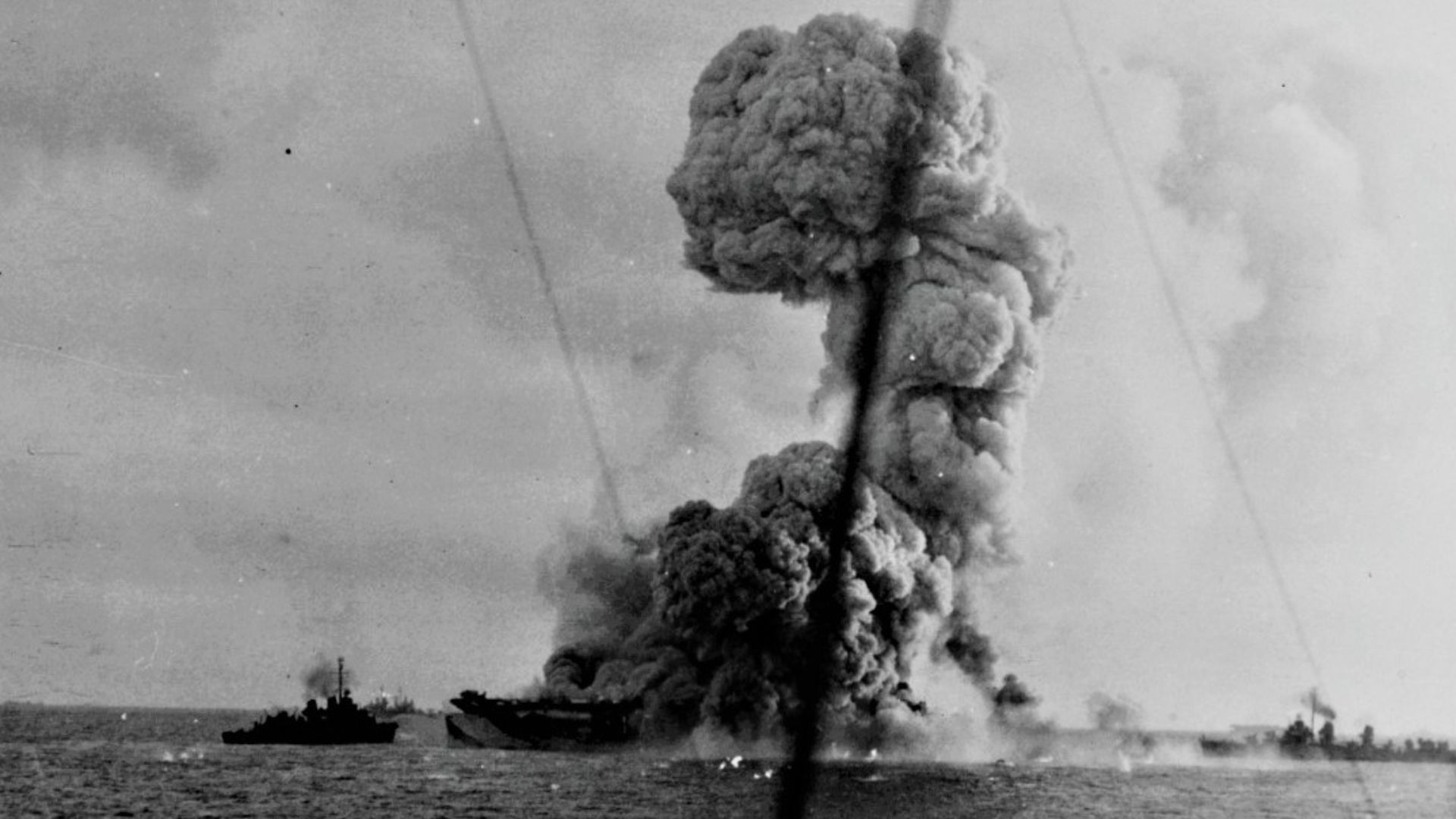 Naval History & Heritage Command , Wikimedia Commons
Naval History & Heritage Command , Wikimedia Commons
Sailors Had To Flee
The officers of the USS Ommaney Bay didn’t know what they would do until Admiral Jesse B Oldendorft gave this order. He ordered those on the USS Ommaney Bay to abandon the ship. Captain Young was the last to escape the burning ship at 6:12 pm.
The Ships Around Her Were Also In Danger
Mere minutes later, the torpedoes stored in the back of the ship went off. The force of their detonation collapsed the flight deck and sent wreckage flying through the air onto the nearby ships. Two crew from the Eichenberger were struck by the debris, adding their lives to the list of casualties.
 Unknown authorUnknown author, Wikimedia Commons
Unknown authorUnknown author, Wikimedia Commons
Survival Was Uncertain
One of the officers ordered to abandon ship was Joe Cooper, who tells the story of floating amidst the wreckage and the flames, hoping desperately no sharks would emerge to consume him. It took over four hours for someone to rescue him.
 Joe Cooper USS Omaney Bay, Andrew Biggio
Joe Cooper USS Omaney Bay, Andrew Biggio
The Ship Was A Major Danger To Those In The Area
The USS Ommaney Bay continued to burn, sending huge plumes of smoke and orange flames into the sky. Around 8 pm, the carrier was deemed unsalvageable and the USS Burns, who had initially come to help, set off a single large round to sink her.
They Had Already Guessed At Where The Site Was
In 2023, two Australian diving teams in the Sulu Sea found the wreck. Retired Rear Admiral Samuel J Cox stated that the site had already been located, and with no other carriers located nearby, it was fairly certain it was the USS Ommaney Bay. The diving teams were able to confirm, without a shadow of a doubt, that the wreck was the carrier.
Someone Found It First
Apparently, the sunken ship was initially found in 2019 by Paul Allen’s team. He and his Vulcan search team have located many sunken WWII vessels, including the USS Ommaney Bay. But they couldn’t confirm the details without corroborating evidence.
They Needed Confirmation
This is when the Sea Scan Survey and DPT Scuba firms came into the picture. The teams had to dive deeper than 100 meters to survey the wreck, now covered in a veritable ecosystem of sea flora and fauna.
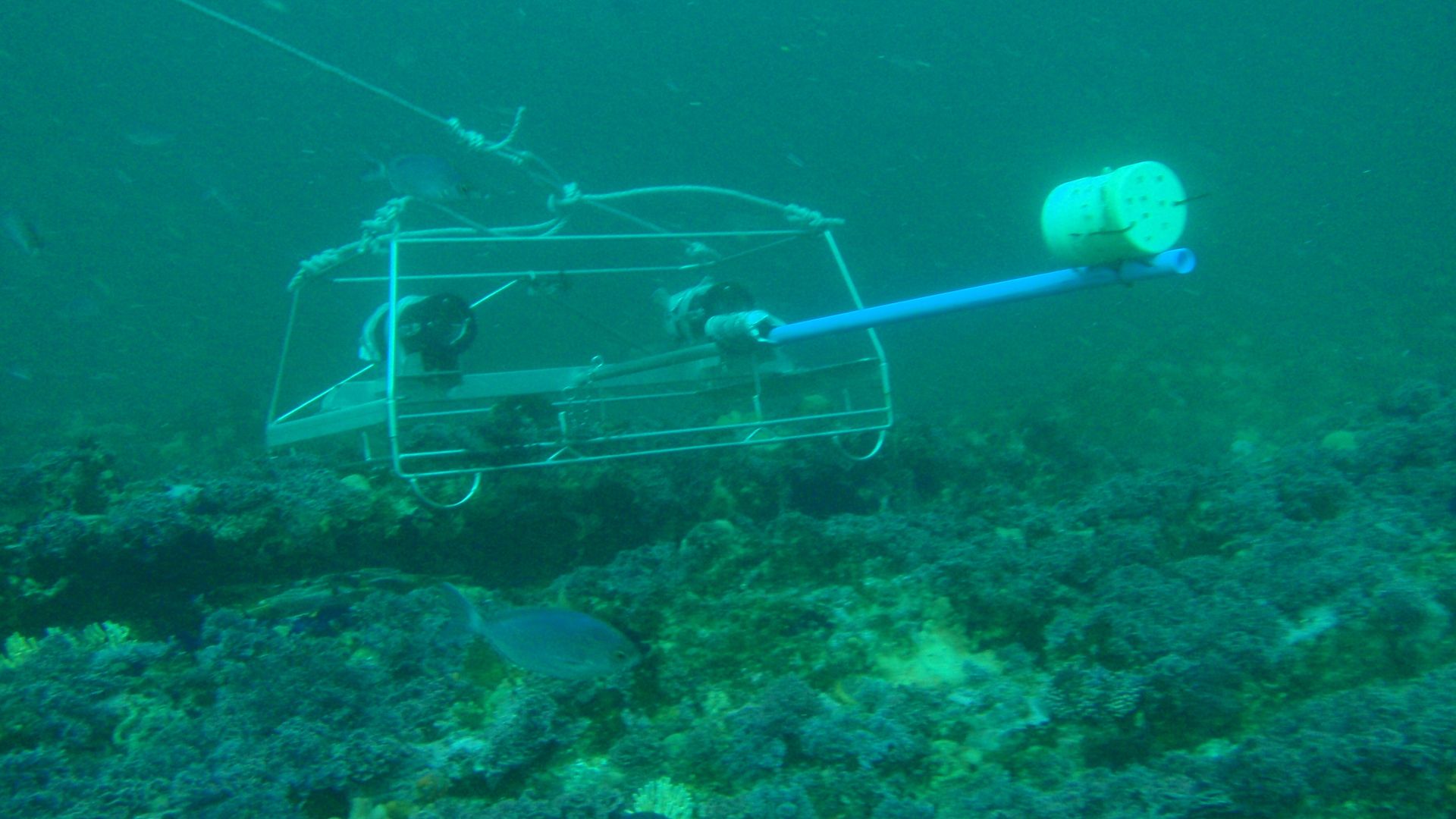 Peter Southwood, Wikimedia Commons
Peter Southwood, Wikimedia Commons
With The Scans Completed, The Diving Began
The Sea Scan Survey team had done their dives in 2020, and they were able to scan the site. Unfortunately, the pandemic shut down operations before the DPT team could follow up on what the scans showed. It was at least another year before anything significant came to the surface.
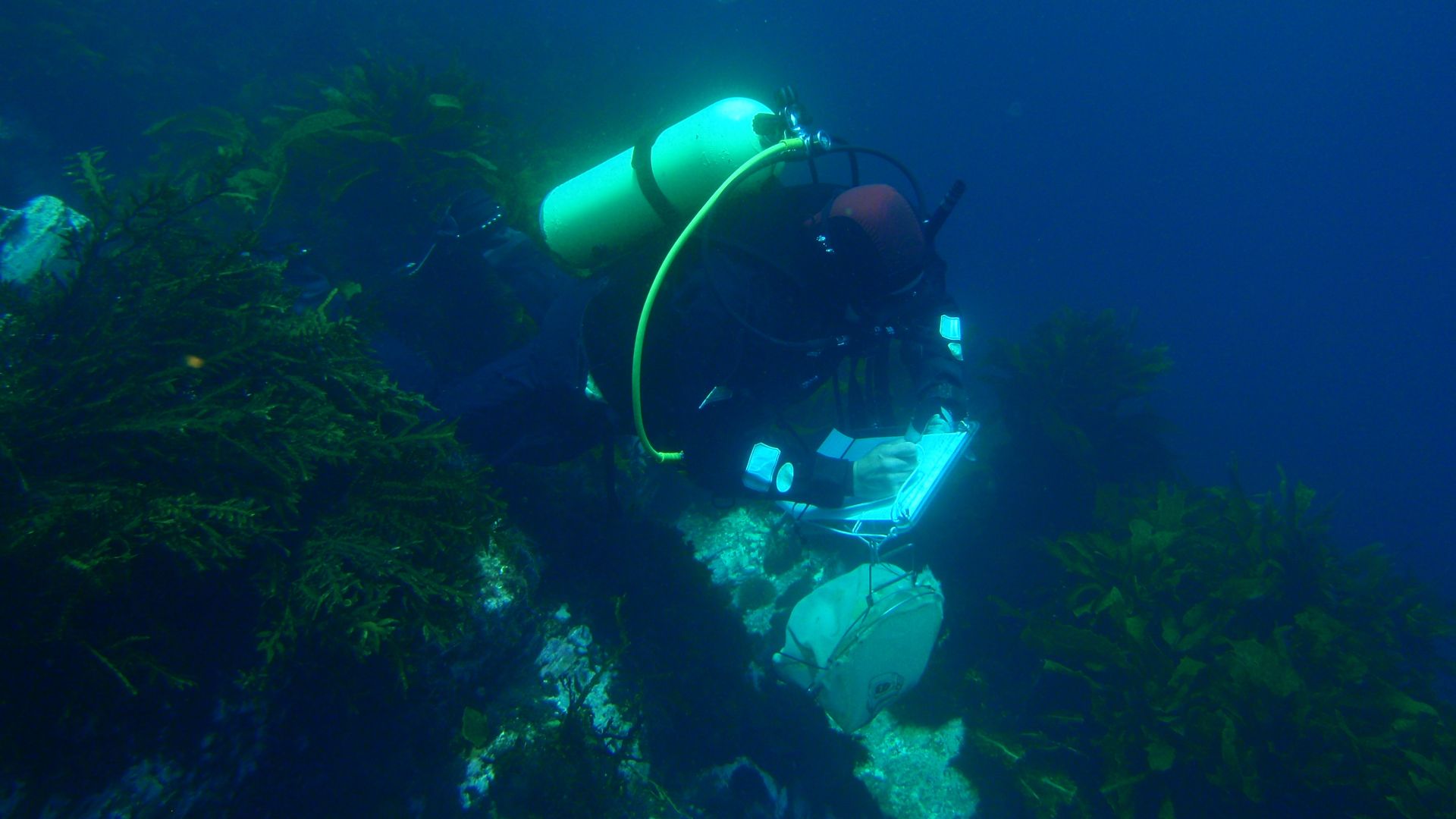 Pbsouthwood, Wikimedia Commons
Pbsouthwood, Wikimedia Commons
Science-Fiction Technologies
The DPT team, consisting of six divers, used rebreathers to recycle the oxygen they used, alongside photography technology that allowed them to photograph the wreck underwater. They utilized special working rotations to keep everyone safe and their supplies intact.
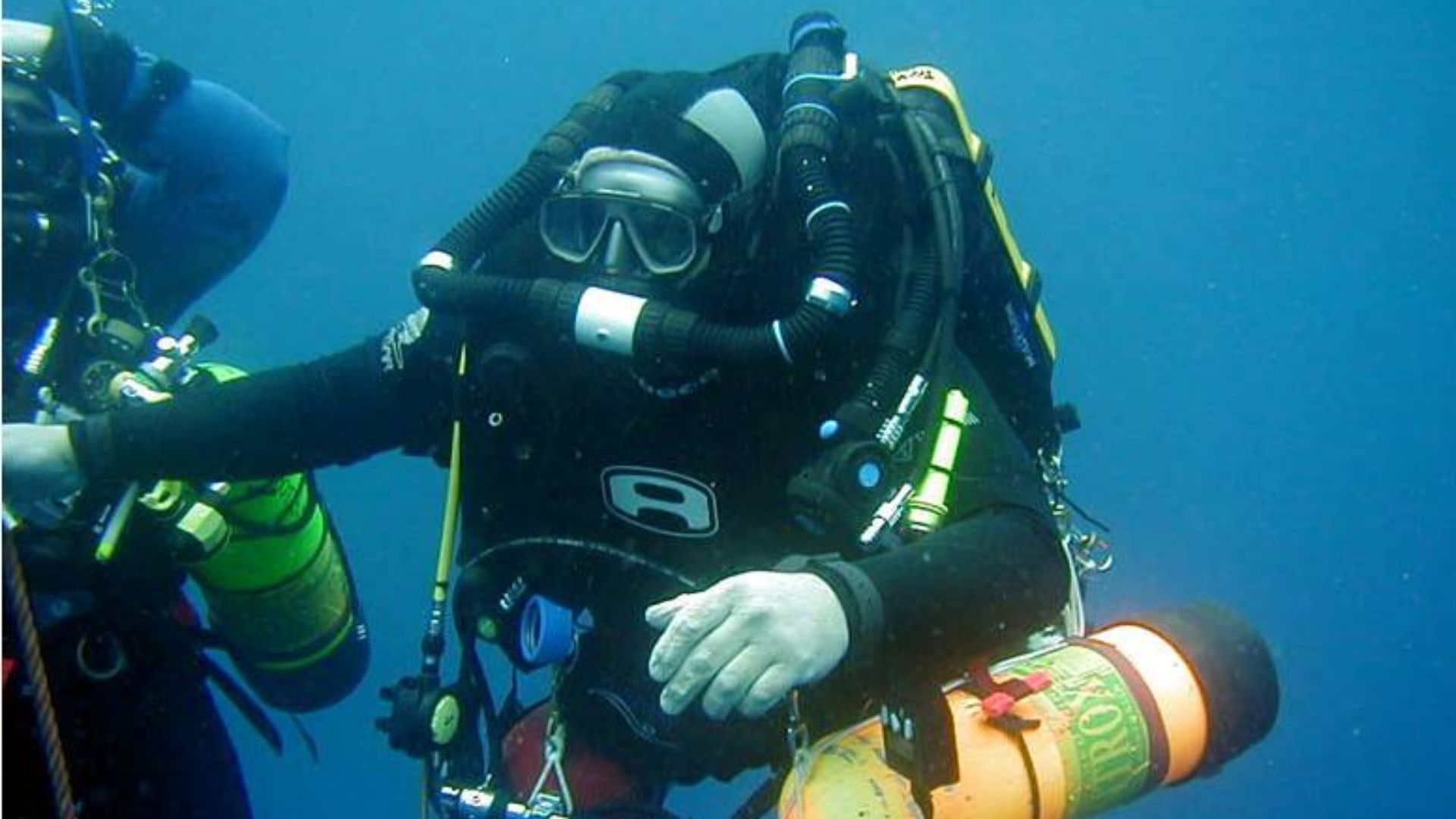 Dr Lyn Turner, Wikimedia Commons
Dr Lyn Turner, Wikimedia Commons
Dedication To Capturing As Much As Possible
It took about 20-25 minutes to reach the wreck, and the DPT team spent about four hours each day submerged. To hasten their dive time and to waste less oxygen while moving around the wreck, they used DPVs—diver propulsion vehicles.
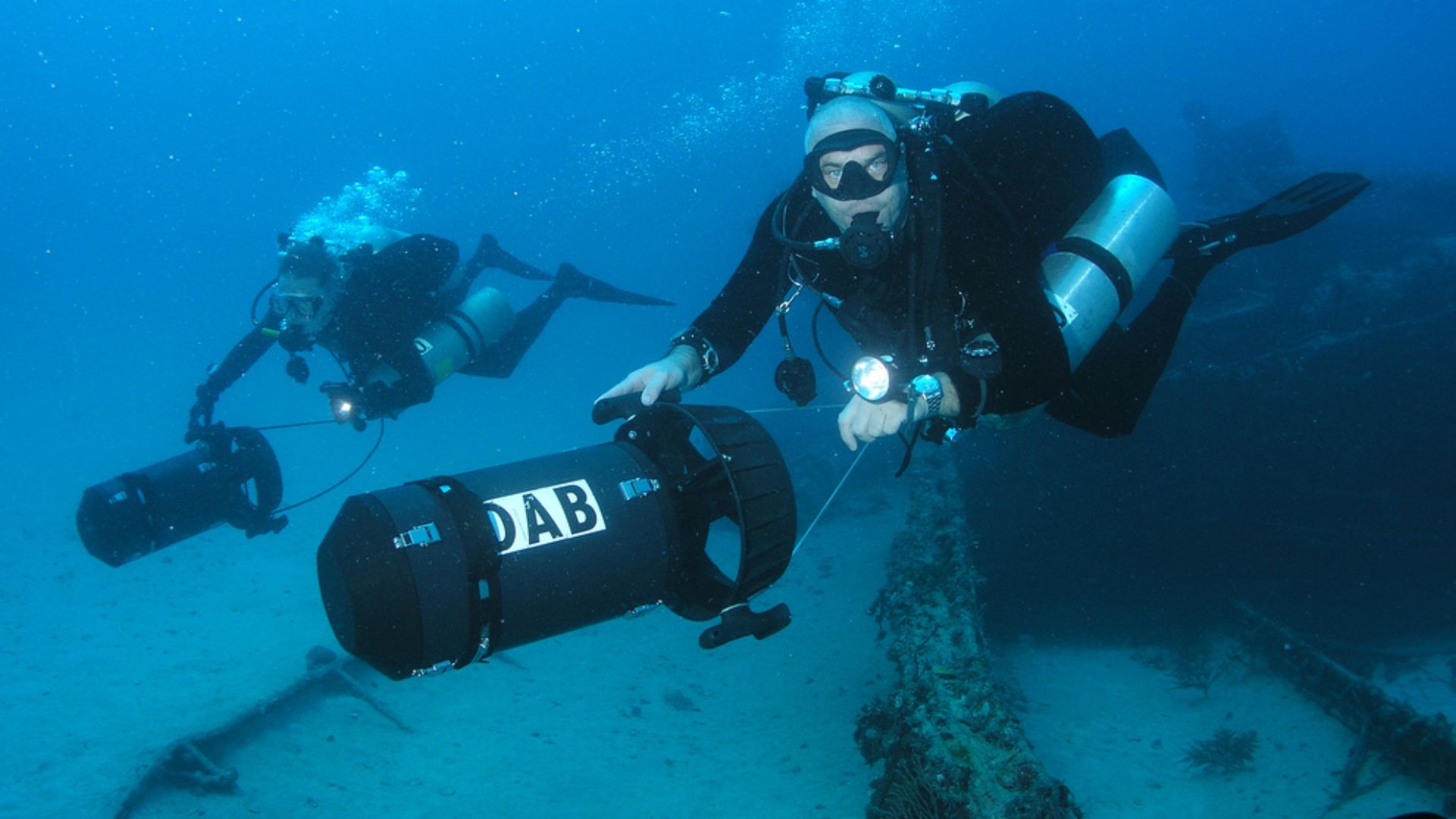 Matthew Hoelscher from Doral, FL, USA, Wikimedia Commons
Matthew Hoelscher from Doral, FL, USA, Wikimedia Commons
The Navy Could Finally Confirm Their Suspicions
They scoured the wreck and found enough evidence to send to the US Naval History and Heritage Command’s Underwater Archeology Branch. There, they firmly established that it was the site of the sunken USS Ommaney Bay.
The First Witnesses Since The Original Destruction
The DPT divers were the first to ever see the wreck after it sank. As the location had been a closely kept secret since the incident, few others even knew where the ship was. David Tipping, a diver on the expedition, said, “...it was quite confronting to see the extent of the damage”.
A Reminder Of What Was Taken
Tipping also noted that seeing the ship was “a poignant reminder that the 95 US sailors lost their lives in service to their country”. The true extent of the damage is yet to be seen, as the carrier sank while still aflame, though it’s easy to assume that it's more extensive than we know.
Targets For Nefarious Individuals
Knowing the location of the lost carrier is vital to keeping it safe. Often, sunken ships of this ilk are the targets of scrap metal hunters. Having the location allows the US Navy to ensure no one is targeting the ship—especially since the ship isn’t just a site of lost resources.
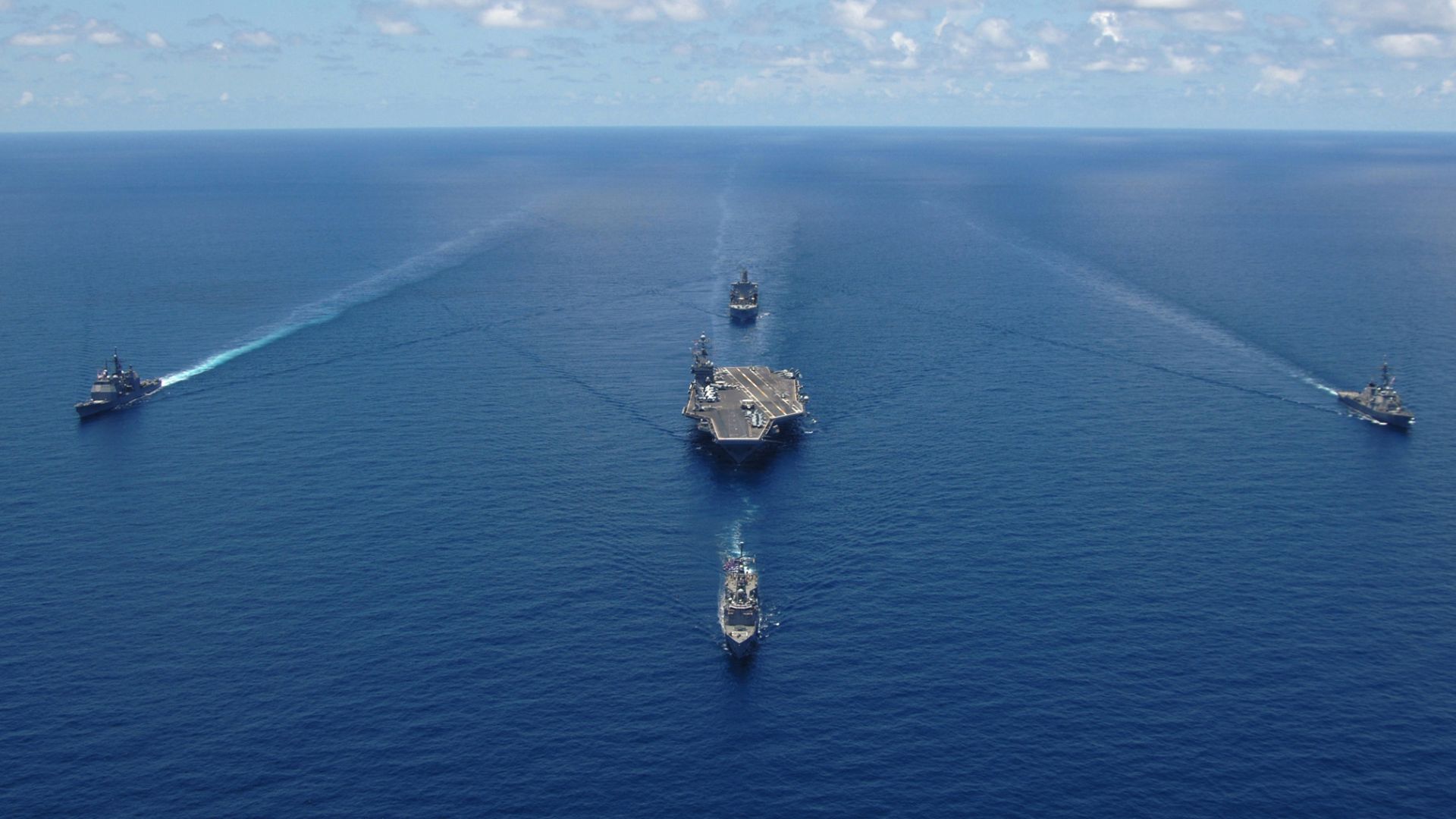 U.S. Navy photo by Photographer's Mate 3rd Class Christopher Stephens, Wikimedia Commons
U.S. Navy photo by Photographer's Mate 3rd Class Christopher Stephens, Wikimedia Commons
An Eternal Monument
There were 95 casualties from the day the carrier sank. Much like other sunken ships, the USS Ommaney Bay functions as a grave for those lost during the conflict. Cox stated in an interview that “these wrecks are war graves…the ship is considered by the Navy a fit and final resting place for the sailors who went down with it”.
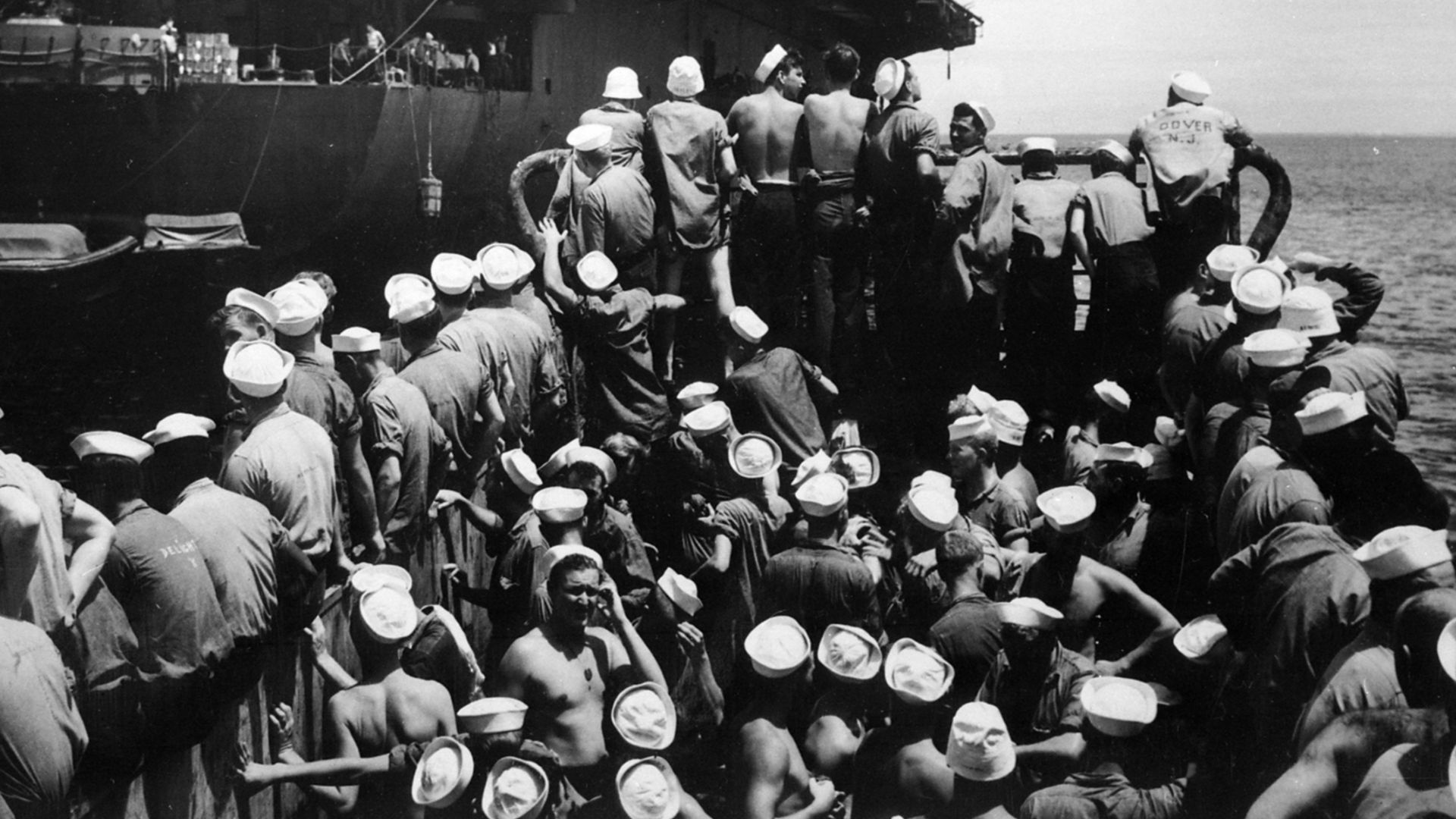 PhoM1c R.W. Mowday, USN (USN photo 80-CASA-618), Wikimedia Commons
PhoM1c R.W. Mowday, USN (USN photo 80-CASA-618), Wikimedia Commons
You May Also Like:
The World’s Eeriest Shipwrecks
The Greatest Ship In American History

